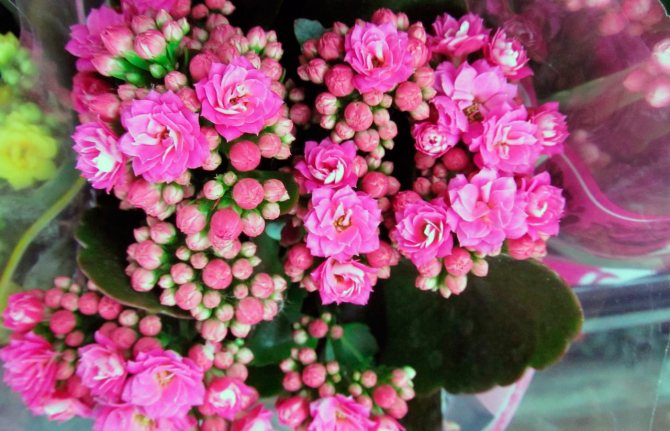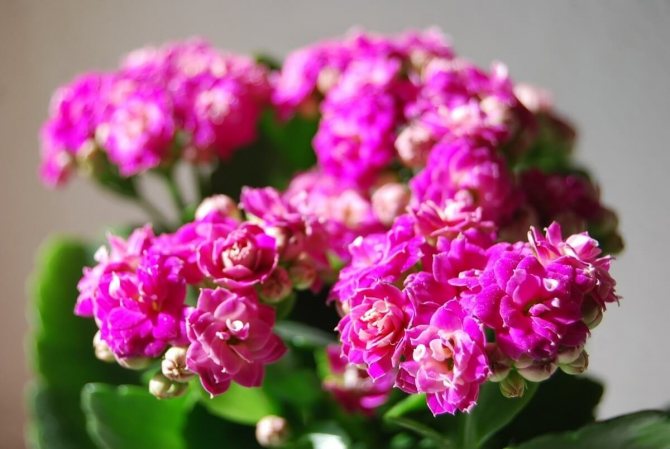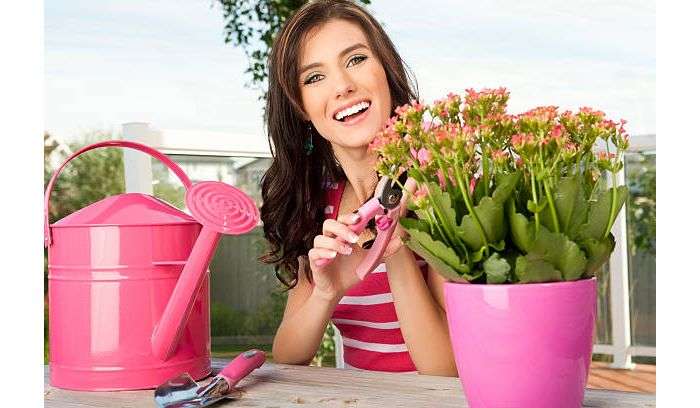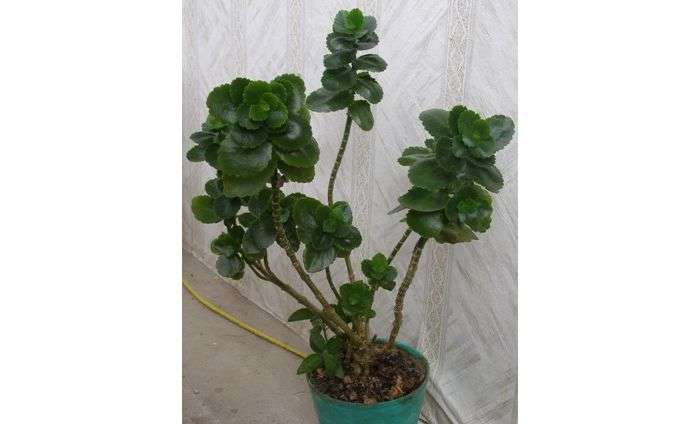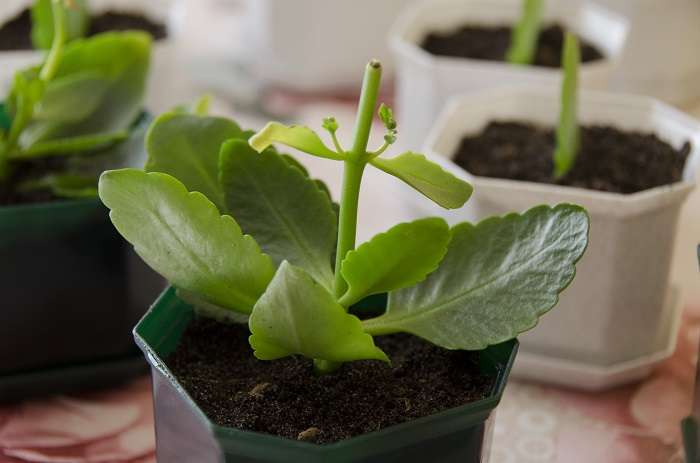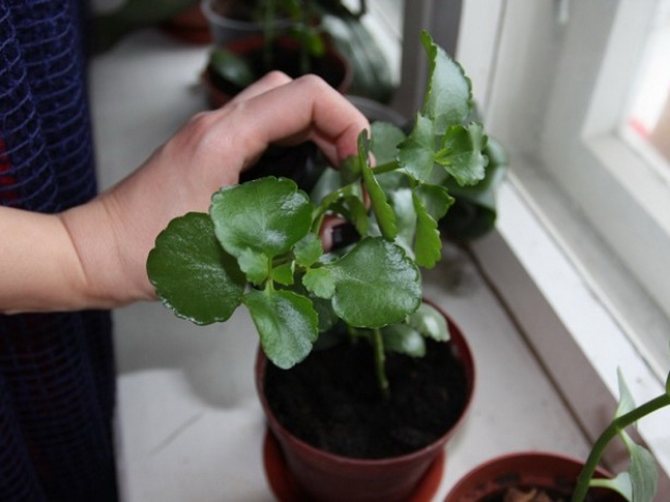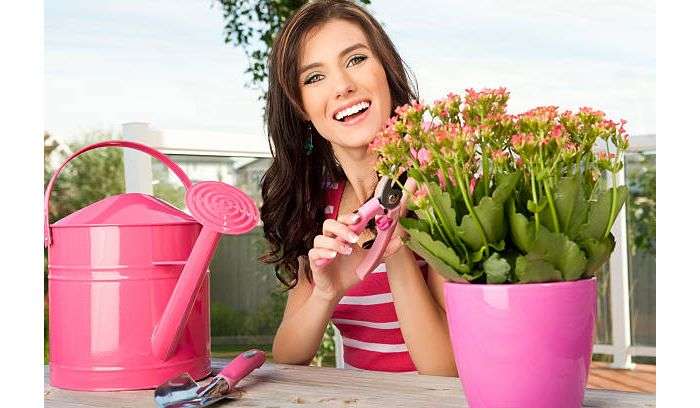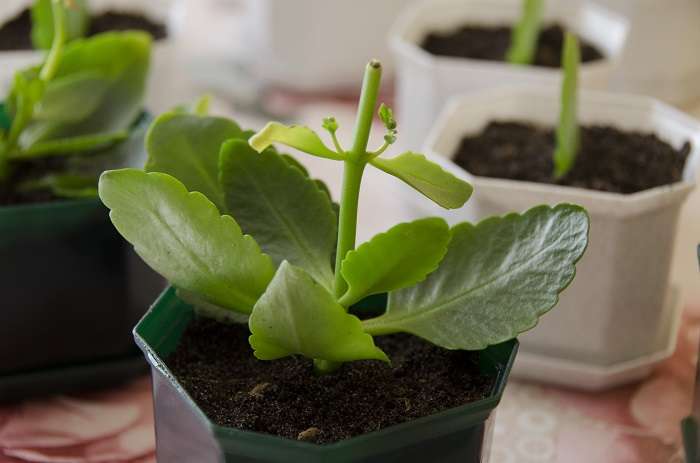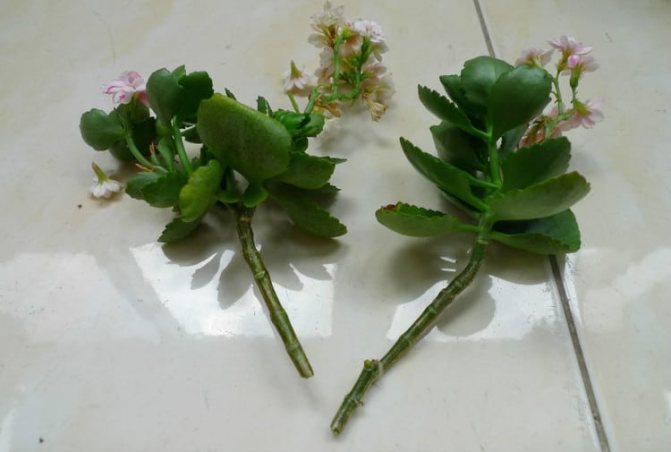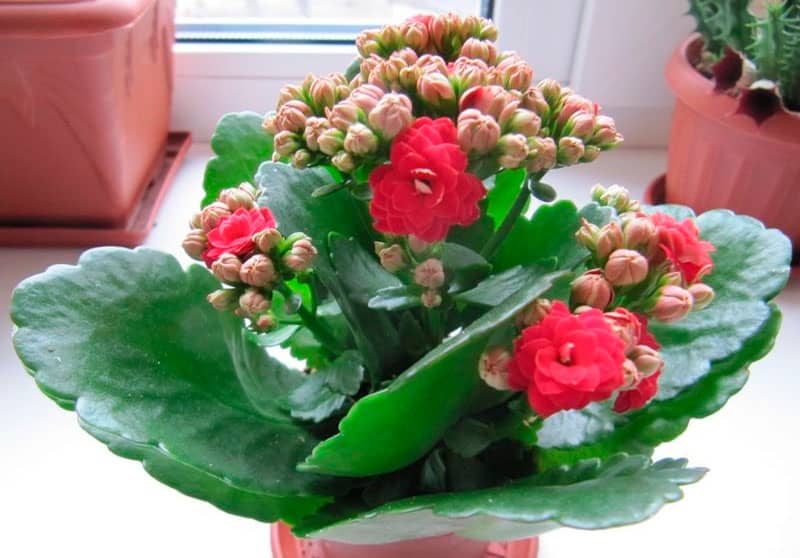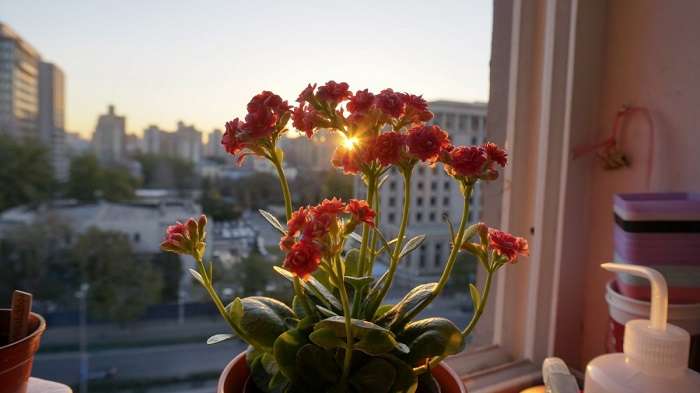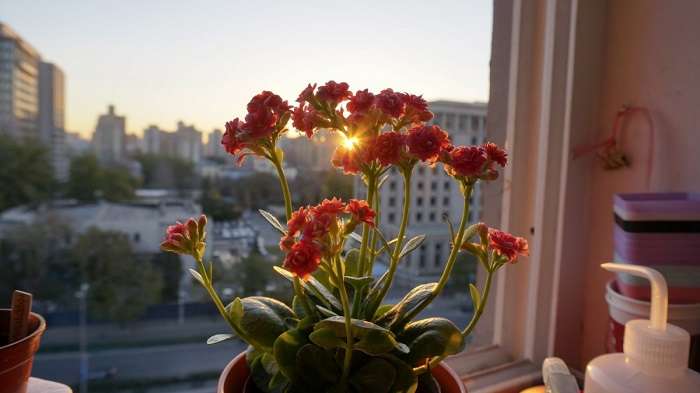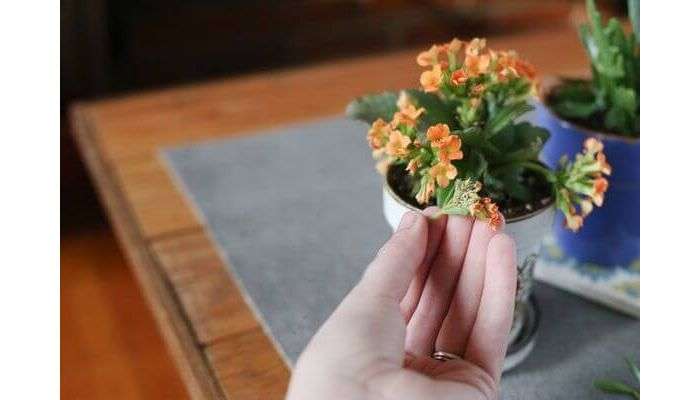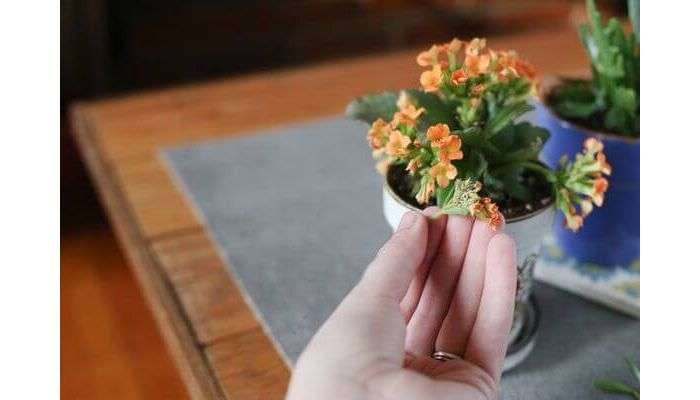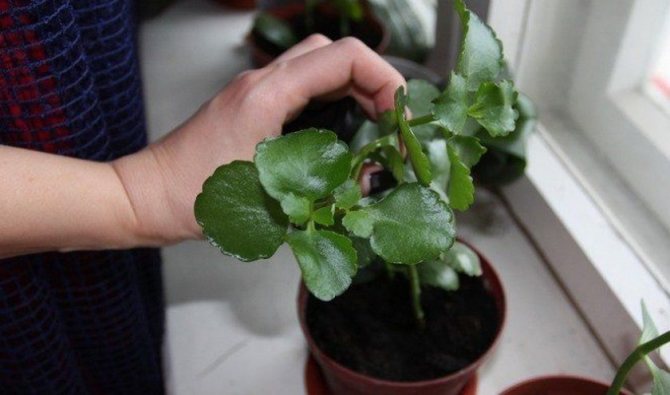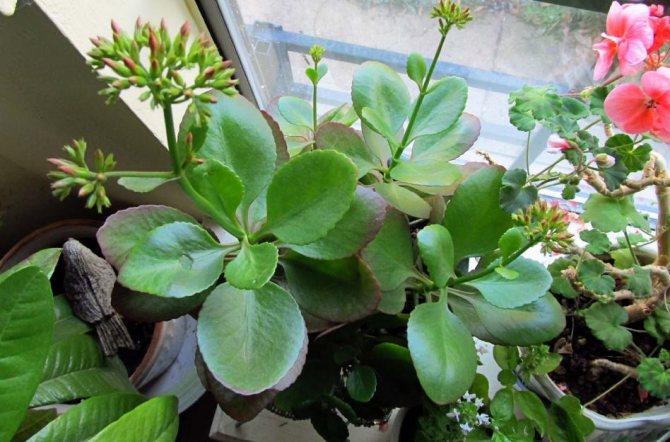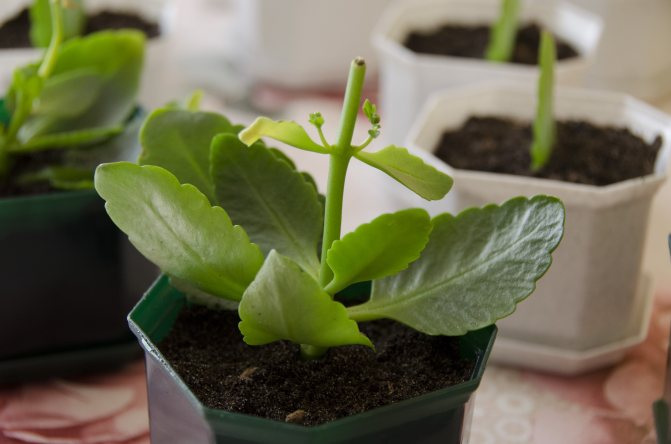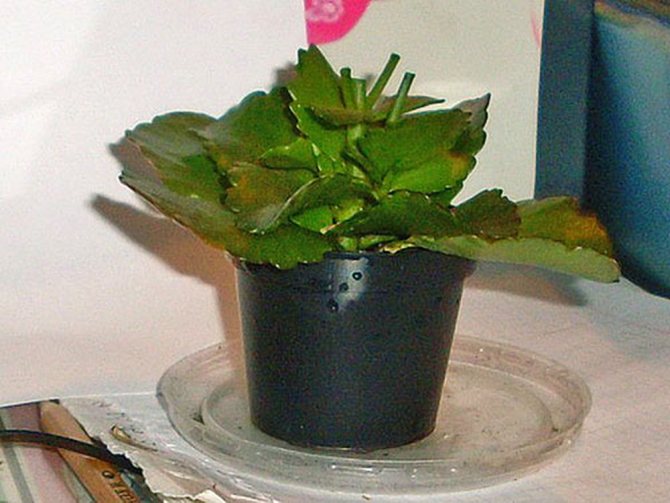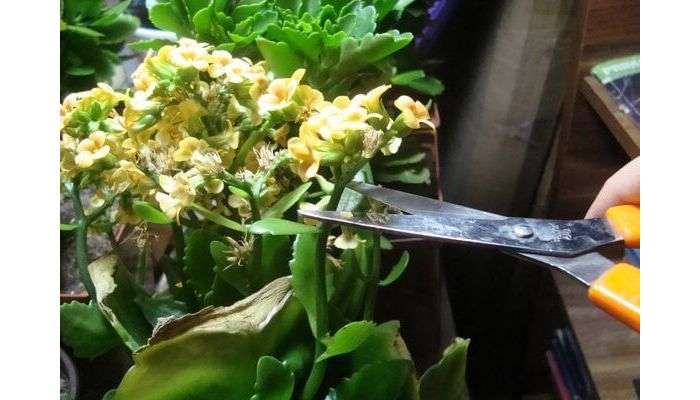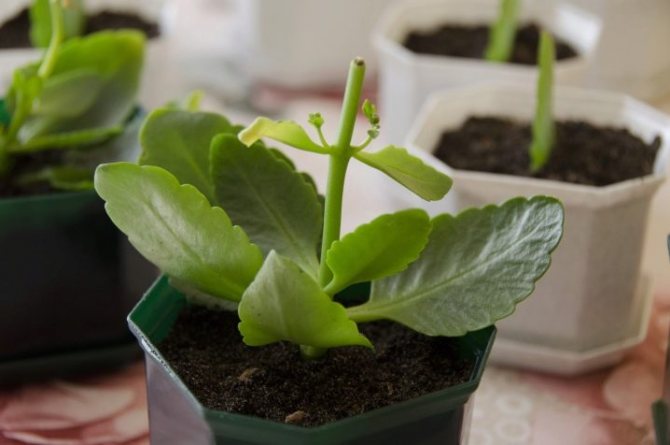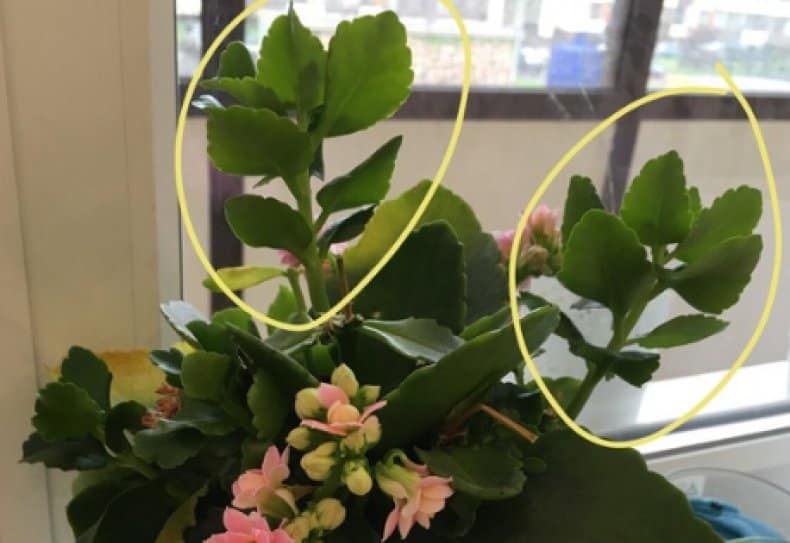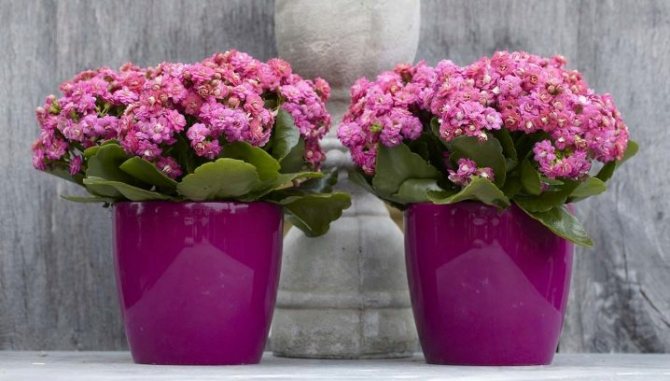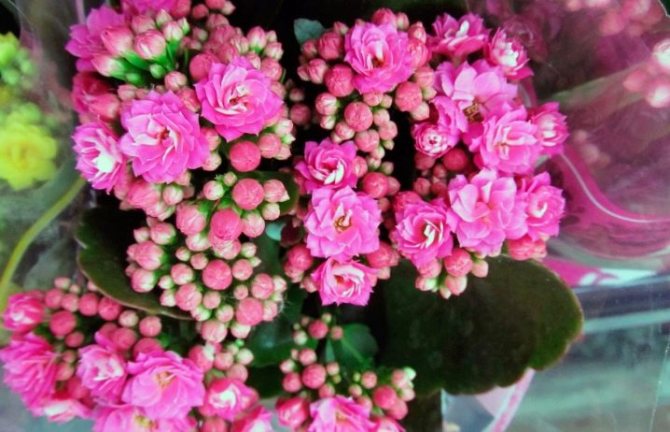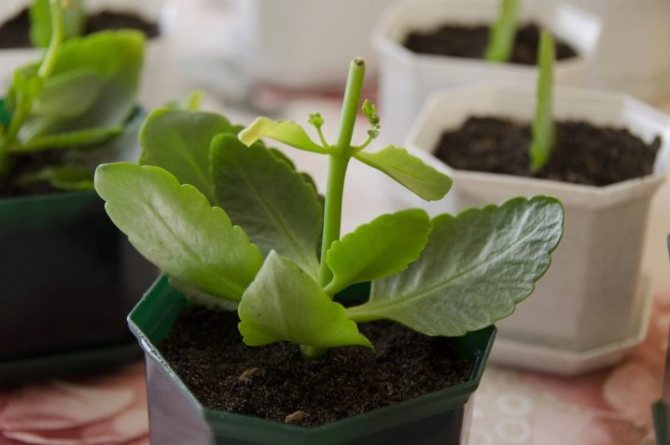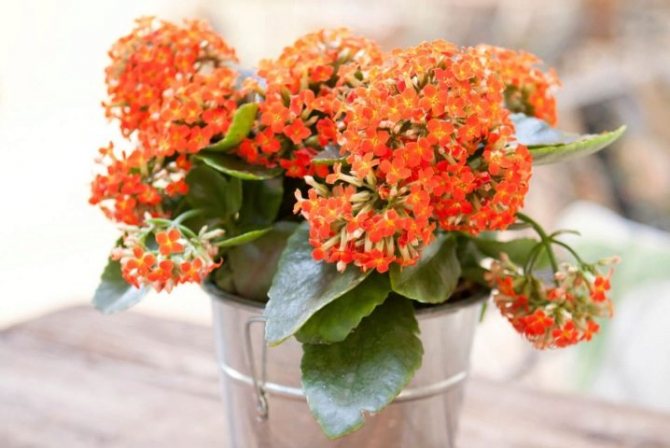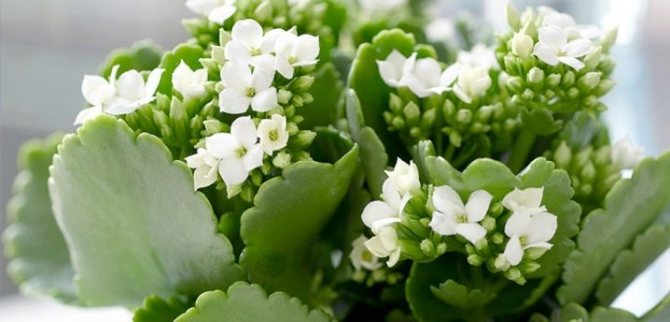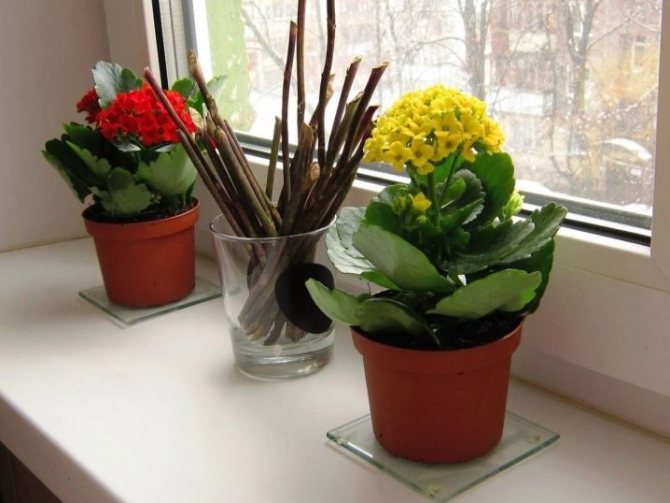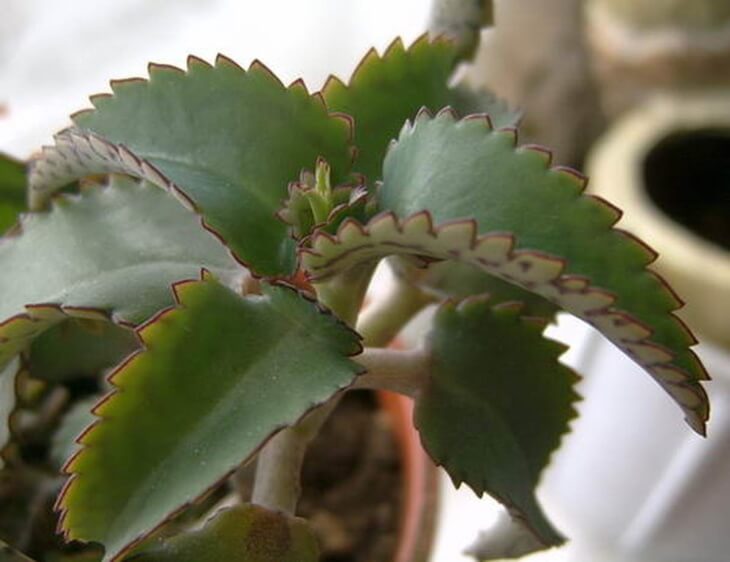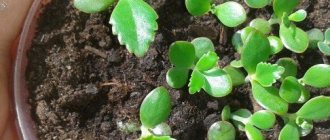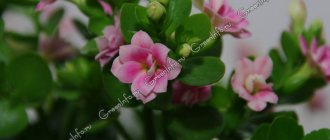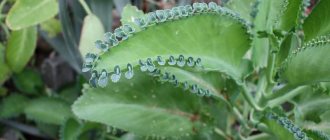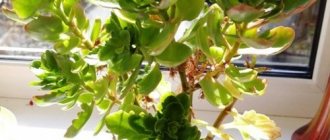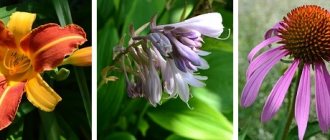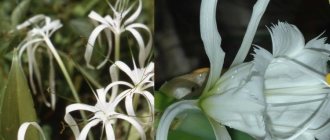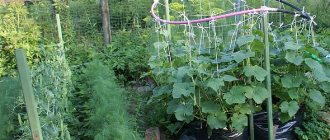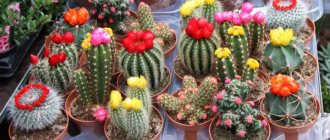Kalanchoe is famous not only for its remarkable appearance and unpretentiousness, but is also used for medicinal purposes. Any grower is familiar with this plant. Our article will tell you about an important "ritual" that gives your green friend the final sophisticated appearance - how to pinch a Kalanchoe. Step by step instructions at your service.
Why does Kalanchoe not bloom at home?
To find out the reason for the sterility of all attempts to cause the appearance of ovaries on a plant, you need to understand its life cycle. Flowering is the logical completion of the vegetative turnover, which in most plants repeats from year to genus at the same time. This particular flower is characterized by the appearance of new buds from December to July. There may be several reasons for this process to be disrupted - and each of them can help to understand why the decorative Kalanchoe does not bloom:
- unsuitable climatic conditions;
- irrigation schedule violations;
- refusal to feed the plant;
- wrong choice of placement on the windowsill.
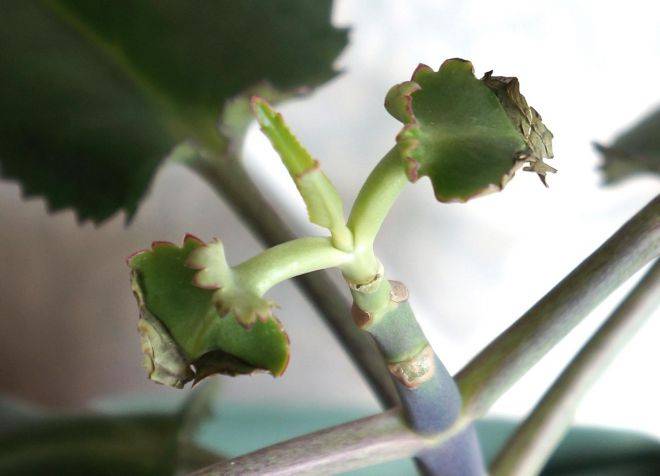
Why does Kalanchoe not bloom and grow up?
Among the widespread reasons why new ovaries do not appear is the overly vigorous growth of the succulent. Kalanchoe does not bloom and stretches when its owner does not monitor the height of the houseplant and does not limit it. The optimal value for it does not exceed 25-35 cm.The stem can grow up to 40 cm if the following mistakes are made in caring for it:
- Refusal to pinch. It arises from the fear of infection or death of the plant, which can be avoided by disinfecting the wound.
- A lot of fertilizers. Overfeeding prevents the formation of ovaries, because fertilizers stimulate the expansion of the leaf plate.
- High ambient temperature. Succulents consider heat to be the best environment for the formation of a tall bush, therefore, when it is stuffy, Kalanchoe does not bloom. It is not difficult to decide what to do with this: the plant must be transferred to a cool place.
Kalanchoe does not grow or bloom
When the plant is restricted in growth and does not plan to bloom, whitish spots or cracks appear on the leaves. The reason why the Kalanchoe does not bloom belongs to the following list:
- depleted soil in a pot;
- improperly compiled soil mixture;
- recent transplant with root trauma;
- earthworms in the ground.
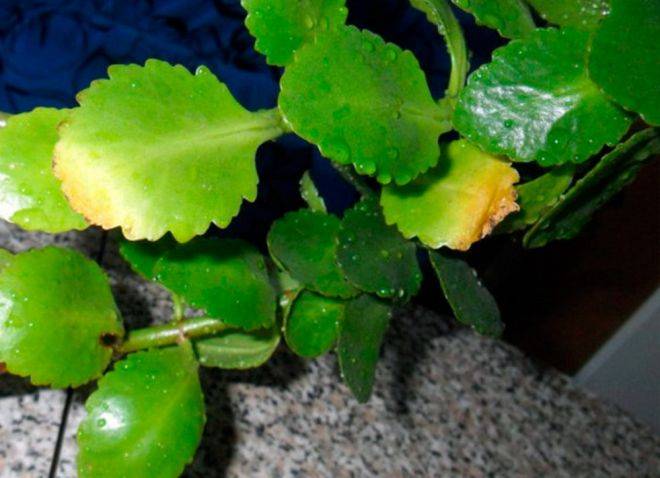

Why did Kalanchoe stop blooming?
The growth of existing flowers and the death of buds freezes if the air becomes cool or drafts appear. If the decorative Kalanchoe does not bloom, but the temperature regime has not changed, this can only mean one thing - the succulent is in a stressful state. There are three triggers for this depression:
- natural aging of the stem;
- close heating source;
- location next to citrus or ornamental tomatoes.
Plant features
Kalanchoe is one of the plants of the succulent group. It is distinguished by fleshy leaves with a slight waxy sheen. In fact, it belongs to the bastard family. Such indoor flowers are good because they do not require careful maintenance, because they are able to withstand almost any temperature conditions and watering regime.
When choosing such a plant for yourself, pay attention to the following indicators:
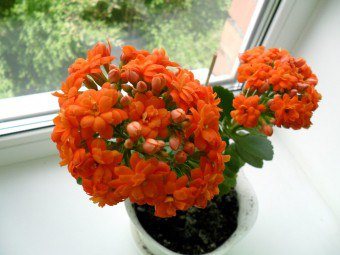

- The stems should be straight and flawless. In the presence of dried leaves and weak shoots, it is better to refuse such a specimen;
- Purchase a plant during flowering, as you can see its color and evaluate the strength and health by the appearance of the inflorescences and their number;
- The best time to shop is winter. During this period, the Kalanchoe is in the midst of flowering. Then you can transplant it;
- If there are spots or breaks on the leaves, it is also better to discard the specimen and find a clean and healthy one.
You can buy a small bush with lush flowers. Once flowering stops, it begins to grow rapidly, so you will quickly bring it to the size you want. It is best to transplant a purchased flower during this period. Succulent soil is suitable for him.
As for the choice of location, this question does not matter much. In principle, the Kalanchoe feels good both in the shade and in the sun, but not under the scorching rays. However, it does not like a very high temperature, especially during the summer dormancy.
But is it possible to cut the Kalanchoe yourself?
In fact, this is a prerequisite. In addition, the plant tolerates such procedures well. The exception is hybrid varieties, which can die if not properly cared for.
Another feature is its healing properties. The sap of the plant is used to treat colds, including the common cold. That is why some varieties are so useful to keep at home on the windowsill.
Watering and feeding rules
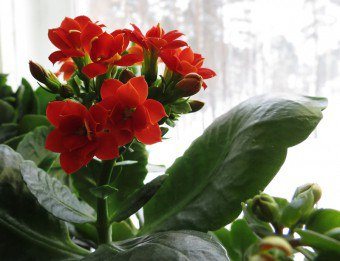

In order for the Kalanchoe to grow healthy, it is important to properly organize its watering regime. To do this, you can use a scheme suitable for most succulents. It is enough to moisten the soil every 5-7 days. If the earthen lump dries up, it is allowed to water more often.
But after flowering, you can reduce the frequency and supply water in small portions every 1-2 weeks. This will be enough to maintain the strength of the plant during the dormant period and prepare it for new emissions of inflorescences. As for the introduction of fertilizers and feeding, it is also better to do this after flowering.
During prolonged blooming, you can use the method of spraying the nutrient mixtures directly onto the flowers and leaves. Otherwise, root nutrition is more preferable. At the same time, it is important to control the growth of green mass.
Pruning a bush
In order to prevent overgrowth of the bush, it is important to know how to cut the Kalanchoe. Most varieties can be pinched and trimmed without much concern. The plant perfectly tolerates these procedures, and each time it gives out new and new shoots. Due to this, you can form a beautifully shaped decorative bush that will look great on the windowsill even after flowering.
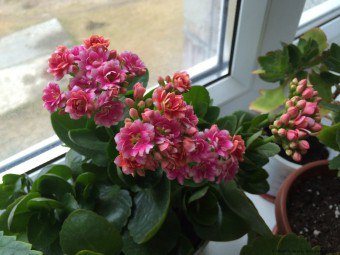

Since basically you have to cut off the Kalanchoe after flowering, it is worth starting from this moment. During this period, it is important to remove faded elements in a timely manner.
After the entire bunch has dried, it is cut to the very root. After that, the plant begins a phase of active growth of greenery. If you want to keep the miniature shape, you shouldn't hesitate with pinching. Otherwise, you can wait a month or two.
You need to remove the tip of the shoot near the leaves diverging to the sides.
Very soon after the procedure, two shoots will grow from the buds in the axils of the leaves. This pinching can be done endlessly, and the result will be the same. In this case, the size of the leaves will decrease. If you want to keep the original shape of the flower, trim the branches towards the bottom. When doing this, make sure to leave the buds for new shoots to emerge. In fact, pruning can be done at any time.
Preparing for flowering
How soon the plant will throw out new buds depends on how you manage to cut the Kalanchoe correctly. Most often, inexperienced growers are faced with exactly this problem. After flowering, the Kalanchoe throws out greenery, but may not bloom again the next year.
In order to achieve re-flowering, it is important not only to cut off old inflorescences and excess shoots in a timely manner. You also need to adhere to a special regime in terms of lighting, temperature and humidity. The fact is that to prepare new buds, you need to observe a rest regime. Of course, in a greenhouse, this is much easier to do.
At home, you can achieve this effect using the following techniques:
- Remove the Kalanchoe from the light. He needs to organize a short daylight hours. To do this, you can use a paper bag or box, which covers the flower during the day for several hours. It will be enough 4-6 hours of exposure to the light per day;
- After it fades, cut off all excess fragments;
- Reduce watering to once every 1.5-2 weeks;
- Move the Kalanchoe to a cool place where the temperature is about 17-20 degrees, not higher;
- Before winter flowering, gradually return the Kalanchoe to its usual mode. The plant will immediately throw out the buds.
The difficulty of preparation lies in the fact that the rest period occurs in the summer, when the day is at its maximum. This is why it is difficult to be careful to reduce the amount of light for the flower. Also, difficulties arise when trying to maintain a suitable temperature regime.
How to make Kalanchoe bloom?
At the same time, stress can spur bud ejection, but only if it is short-lived and externally controlled. Experts know what to do if the previously blooming Kalanchoe no longer blooms and suddenly has lost all the ovaries. The sequence of actions should be as follows:
- Increase the frequency of watering. The soil under the succulent plant should be constantly moist for 2-3 days.
- Double dose of fertilizer. Spontaneous feeding outside the plan to force the plant to grow to the "dormant" ovaries.
- Loosening the soil at the roots. Aeration of the root system enhances the immunity of the buds.
Blossfeld's Kalanchoe does not bloom - what to do?
There are at least 130 varieties of the Blossfeld variety: each of them has small double flowers of a wide variety of shades - pink, orange, red and yellow. Blossfeld's Kalanchoe does not bloom if it grows in a darkened place He also does not like direct light, but responds with a large number of ovaries to bright lighting. You can determine the correctness of care that stimulates flowering by two signs:
- The presence of a red border on the leaves of the plant. When Kalanchoe does not bloom, ovaries do not appear if the leaves have a uniform green color. The red "strip" signals that the plant is receiving the right amount of water and nutrients.
- Lack of fungal diseases. If brown spots appear on the leaves, they are removed, and the cut points are treated with a fungicide.
Kalanchoe Kalandiva does not bloom
The Kalandiva variety is considered the most suitable for living in an apartment or house. Its bright double flowers gather in large inflorescences, so if one inflorescence dies, the petals of the neighboring ones also dry out. It has one feature: while other succulents lose their ability to flower due to moisture on the leaves, Kalandiva, even if we consider that it is a subspecies of Kalanchoe, does not bloom if it is not sprayed. It is hard to tolerate dry air, so you need to spray water at room temperature on the plant at least 2-3 times a day.
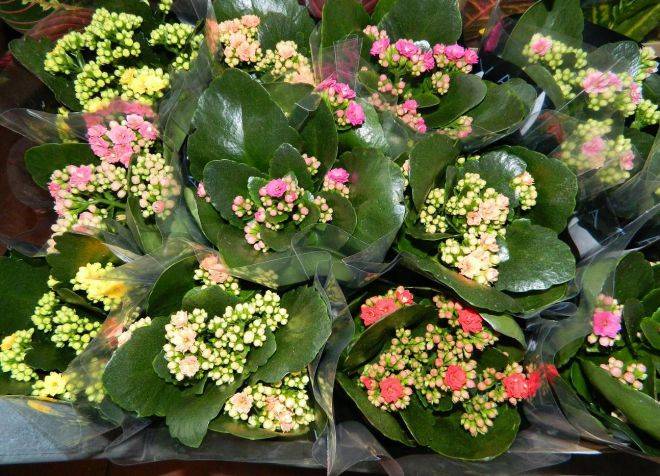

How to cut Kalanchoe to bloom?
Pruning is recommended for any species of this ornamental plant as a flowering stimulating measure. The process is the removal of excess leaves or painful peduncles to prevent the development of diseases and give a neat shape.Since, with the development of the stem, the upper shoots tend to thin out and become sterile, it is important to know how to pinch the Kalanchoe correctly so that it blooms. These two processes (pinching and cutting) are similar, so they can be combined into one:
- First you need to choose the weakest tops of the plant that have not been covered with flowers for a long time.
- A small part of the stem is removed with scissors or fingers so that the remaining wound is small.
- After pinching, the edges of the stems are sprinkled with ash or charcoal to prevent dying off.
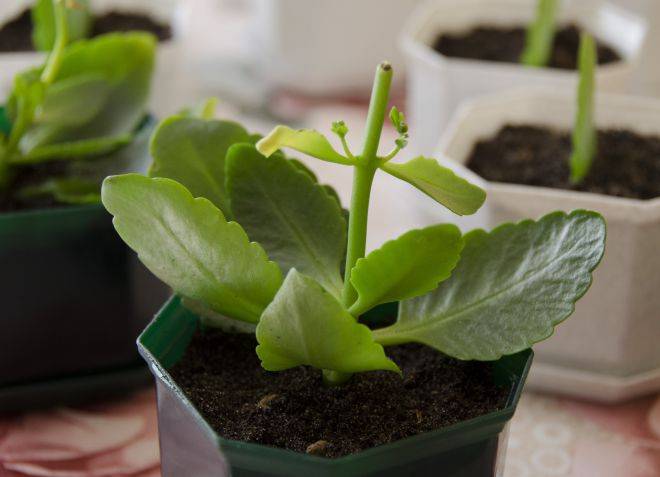

Kalanchoe flower - how to care for it to bloom?
In order for ovaries to appear on a houseplant, the care regime for it must be radically revised. You should not think about how to make Kalanchoe bloom at home - you just need to exclude factors that hinder this process. These include:
- Excess sunlight. Constant stay on the windowsill, located on the sunny side of the dwelling, makes the plant grow in height, spending all the juices on this process.
- Avoiding excessive watering. Shrub leaves are able to accumulate moisture and spend it gradually, so a lack of water is not as destructive as its excess. In summer, the procedure must be repeated once a week, in winter - twice.
- Fertilization with a special complex for succulents. If the Kalanchoe does not bloom, whatever its owner is trying to do, this may mean that he needs a mineral complex with potassium, sodium and manganese in the composition.
How to form a crown?
Kalanchoe formation - a simple and long-term business. How to form a Kalanchoe? All that is required is to pinch off the tips of the shoots as they grow.
How to form a Kalanchoe flower if it is stretched out? Too elongated shoots need to be plucked off more radically, while sprinkling the cuts with ash or charcoal. Thus, volume will gradually appear.
How to pinch a Kalanchoe?
So is it necessary pinching Kalanchoe? Many owners often complain that their Kalanchoe does not bloom again.
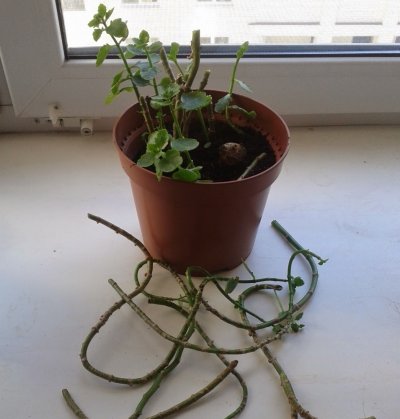

They don't even know that the lack of variegated buds may be only the lesser of many problems.
If some owners take a close look at their plant, they may notice the thinning of the shoots. This means that minerals are poorly supplied to this area.
And this can lead to the fact that the shoots dry out entirely. It is to solve this problem that pinching Kalanchoe.
Weak shoots can be pinched off anything: fingers, scissors, etc. It is advisable to do this slowly and carefully so as not to pinch off the excess.
But even if it happens, the wound can be easily curedby sprinkling it with ash or charcoal.
What is Kalanchoe pruning at home and why is it needed?
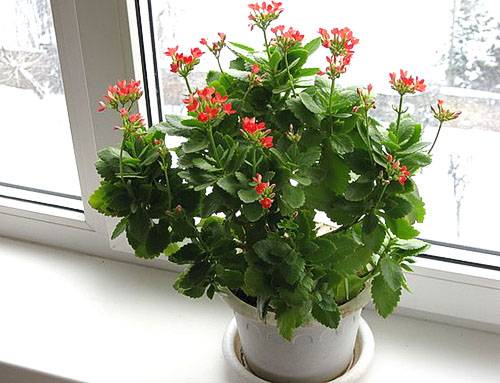

Pruning Kalanchoe is the removal of excess leaves or peduncles. It is necessary to give the flower a neat rounded shape. Growing in the form of a small bush, the plant looks more original than a long, thin stem stretched upward with chaotic branches.
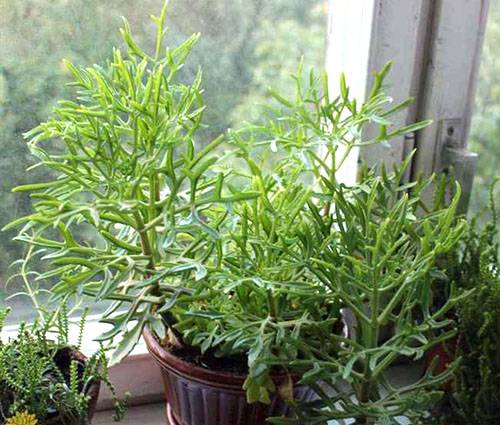

In addition to the decorative purpose, pruning Kalanchoe at home is necessary to create the most favorable conditions for plant life. The accumulated sap inside the flower is distributed evenly over the processes, filling the leaves. The plant becomes succulent and more resistant to drying out and wilting.
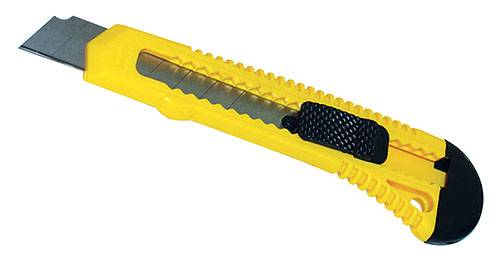

Kalanchoe pruning is of three types:
- initial;
- preventive;
- after flowering.
It is better to use a sharp table knife or stationery blade to trim the flower. Picking off the leaves by hand can damage the plant and cause it to wilt.
Why trim Kalanchoe?
The Kalanchoe flower is characterized by the rapid growth of shoots. If you do not participate in the formation of the crown of the plant, then it takes on a form that is far from ideal.
Pruning Kalanchoe has several purposes.
- Pinching of the upper shoots to form a beautiful crown and to maintain a compact, rounded shape. The top of the plant is actively stretching in the spring. It needs to be pinched, then the bush will grow in breadth and acquire a decorative appearance.
- When the bush is rejuvenated, old shoots are removed, which eventually shed the lower leaves. Such parts of the flower become unattractive.
- Timely removal of wilted flower stalks is necessary to prevent infestation and for lush flowering.
- Pruning to maintain the health of the bush, as a result of which the sap is evenly distributed over all shoots and leaves. A healthy plant with fleshy leaves is formed, resistant to diseases.
There are about 200 varieties of Kalanchoe, which react differently to crown formation.
Advice
Kalanchoe varieties Blossfeld and Kalandiva calmly tolerate pruning. Their crown can be boldly formed without fear of harming the plant. Some hybrids with yellow and white inflorescences react painfully to pruning, so only the tops of them are pinched.
How to cut Kalanchoe depending on the type of flower
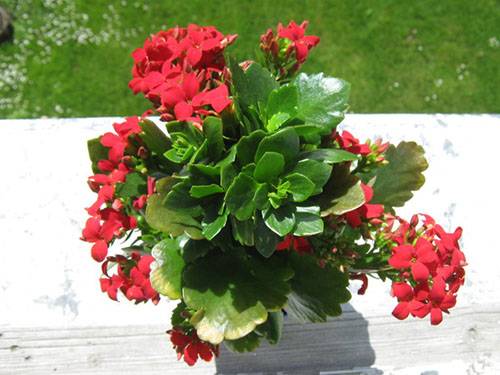

Depending on the Kalanchoe variety, the pruning rules also differ. To date, more than 200 plant varieties are known, however, few can grow at home. The most common is the Blossfeld variety, which blooms with bright red flowers. Pruning of its excess leaves can be done in unlimited quantities. Even if you cut off all the adventitious branches and leaves, leaving only a "stump", after a while this flower will again be covered with thick leaves.
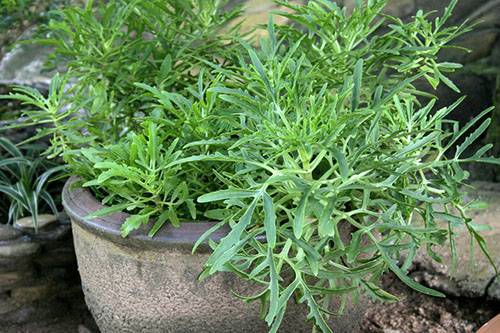

The situation is more complicated with Kalanchoe varieties, blooming white and yellow flowers. Such varieties of it are quite rare and whimsical. Excessive leaf removal can be detrimental to the plant. Before pinching Kalanchoe of rare species, it is necessary to accurately determine its variety.
As a rule, competent pruning of Kalanchoe is painless for a flower. However, in the case of a wound on the stem in the form of rotting, it is necessary to sprinkle this place with a small amount of wood ash.
General rules
Pruning Kalanchoe consists in removing overgrown shoots, wilted buds and leaves that block adequate nutrition and healthy development of the plant.
It should be noted that there are several types of trimming:
In the article, we will separately dwell on the nuances of each type of pruning, but first, we will consider the general component.
A well-sharpened kitchen or special garden knife is required for high-quality pruning, but a new stationery blade will do. Disinfect the instrument with alcohol in advance. Just in case, you can grab wood ash or crushed activated carbon, which can be used to treat the wounds that have appeared on the stem. Advice: in any case, do not pick off the leaves by hand, as this will damage the stem and further wilting of the flower.
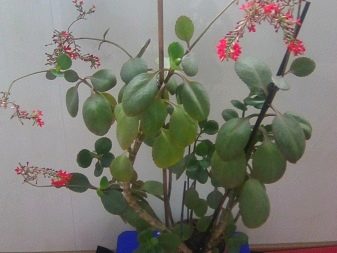

When not to carry out the procedure:
- in the first days after purchase or in a new place, since the plant needs to get used to the new environment and changed growth conditions;
- during the flowering period;
- in the acute period of the disease (dead buds and leaves are best removed 2 weeks after the succulent has fully recovered);
- 2-3 weeks after transplant;
- when exposed to direct sunlight (after the procedure, it is also recommended to protect the bush from direct ultraviolet radiation);
- in winter.
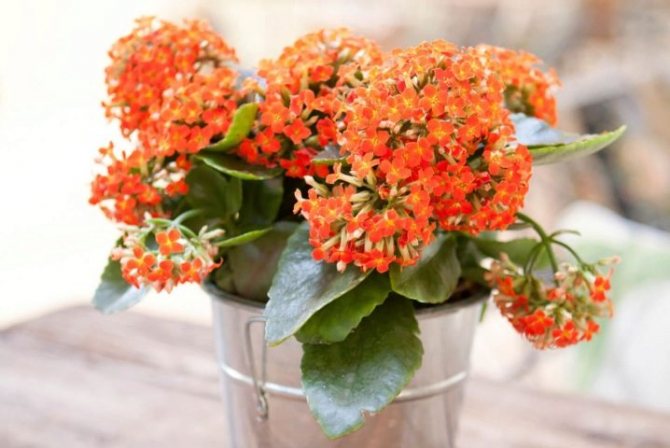

The features of pruning depend on the Kalanchoe variety. In indoor conditions, only a small part of the many known varieties can grow.It is very important to carry out the procedure in accordance with the characteristics of a particular variety in order to avoid negative consequences.
You are lucky if the Kalanchoe has bright red inflorescences, as such a plant quickly regenerates. This means that the leaves can be cut frequently and in large quantities, forming the desired crown with ease. The Blossfeld variety has such lush flowers, which, according to experienced florists, is distinguished by its vitality. The Kalandiva variety, artificially bred from the Madagascar Kalanchoe Blossfeld, also tolerates pruning very well. It is easy to recognize - the flowers of such a plant will be terry.
If your Kalanchoe flowers are yellow or white, you have a hybrid in front of you, and it will be more difficult to cut it. You cannot cut off a large number of leaves from a whimsical plant, as it can quickly wither. Be careful not to touch the stem and adjacent leaves. In the case of an inaccurate or unnecessary cut, immediately sprinkle the damaged area with wood ash. Due to the complex content and capriciousness, light hybrid varieties are bred in indoor conditions much less often.
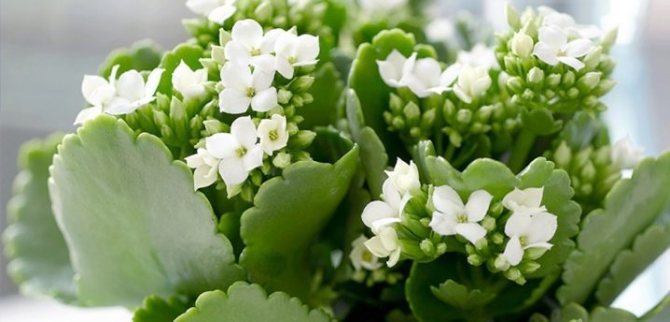

Initial and preventive pruning
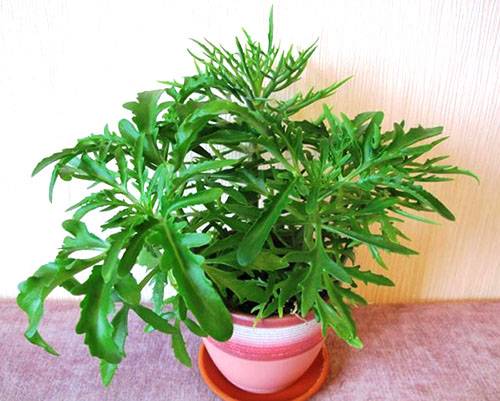

A young plant must be pinched almost immediately, as soon as it has taken root and began to grow. On each of the Kalanchoe shoots, it is necessary to cut off one - two upper leaves. This is the initial pruning of the flower. Further, as necessary, preventive pruning will already occur: new shoots will appear at the site of splitting off, on which leaves will form. This procedure must be repeated until the plant takes on a neat round or bushy shape.
If you have any questions, you can watch a video on how to cut Kalanchoe at any stage of its growth.
In winter, in particular, after November, it is advisable to stop pruning. The procedure can be resumed in late spring, however, at this time the flower may bloom, and then pruning will already be contraindicated.
Prophylactic pruning can be carried out as soon as new leaves are formed on the shoots. You don't have to wait for them to grow up.
During the initial formation of the flower, it should not be kept in a highly lit room. In bright light, the plant quickly grows, as a result of which its overgrowth occurs.
Planting and caring for the garden
Few know that Kalanchoe can be kept not only indoors, but also in the garden. But, growing (reproduction) at home much easier than outdoors.
How to care for a Kalanchoe flower outdoors? The plant cannot withstand temperatures below freezing... The soil should be of a neutral or slightly acidic composition with a nutrient layer thickness of at least 12 cm.
Seedlings should have a height of at least 10 - 12 cm and about 6 developed leaves. Fertilize the area before planting rotted manure, superphosphate and potassium salt.
After engraftment, in July and August need feeding in the form of nitrogen fertilizers. The distance between the plants is approximately 30 cm and the row spacing is 50 cm.
Before flowering, you need to loosen the soil at least 5 - 6 times.
What if it doesn't grow?
In such a situation, the owner should make sure that he has followed all the recommendations for Kalanchoe care.
It is also possible Kalanchoe does not grow due to existing diseases and pests.
They get rid of diseases and pests by pruning the affected areas and treating them with insecticides.
Recently I fell in love with Blossfeld's Kalanchoe! An unpretentious flower with many small buds pleases the eye and decorates the windowsill! It reproduces very well by cuttings, but personally I was faced with the question of how to form a beautiful bush and make it bloom? I bring to your attention 5 tips in this matter !! They will help both a beginner to care for the Kalanchoe and the already happy owner of an entire plantation! HOW TO Trim Blossfeld's Kalanchoe Blossfeld's Kalanchoe is a very beautiful and useful plant that can be found in every other house. It not only blooms often and luxuriantly, delighting its owners, but can also be useful in the treatment of various diseases, for example, with a runny nose and ear diseases, skin diseases. So that the flower does not grow and does not stretch, but is of a neat rounded shape, it is necessary to cut the Kalanchoe in time.You will need - Kalanchoe; - a sharp knife, pruner or blade. Instructions: 1. First of all, determine the type of your Kalanchoe, since different varieties have different attitudes towards pruning. Blossfeld's common Kalanchoe, blooming with red flowers, can dive without restrictions. Even if you leave only one stump, after a while it will sprout and curl up. Take more careful care of rare hybrids with yellow, pink, white flowers, they may even die as a result of improper pruning. 2. If the plant has overgrown (this often happens in sunny places), has lost its compact form, and an ugly frail top has formed, remove it. After each flowering, be sure to cut off all the flower stalks. To form buds, place the plant on a dark windowsill (you can even close the flower overnight with a bucket or box) and keep it practically without watering for a whole month. Then move it to a bright place and start watering, such a regime change has a beneficial effect on the Kalanchoe, and it will almost certainly bloom. 3. In order for the Kalanchoe to grow into a dense bush, carefully observe the shoots. As soon as they start to grow, pinch off the top two leaves of each. After a while, two shoots will appear in the place of the pinching, let them grow until the third pair of leaves appears, and cut them off at this level. Wait for two more shoots and a third pair of leaves to appear, then pinch again. Do this until a neat, dense bush of a round (or required) shape is formed. 4. Prune the Kalanchoe shoots for the last time in November (on the south window) or in winter (on the west or east window). Please note that it is advisable to keep the Kalanchoe in a cool place in winter, the optimum temperature is 10-15 C. 5. You can propagate the Kalanchoe or simply update it with cuttings. To do this, cut off young shoots 10 to 15 cm long with a sharp blade or knife. Remove the leaves from the bottom of the cutting, dry for 1-2 days. Prepare a place for the flower in a pot with a mixture of sand and wet peat. Place the cutting to a depth of about 5 cm, ground well around. Do not cover the stalk with plastic or a can, or spray with water. Just water it moderately and keep it at a temperature of 20-25 C. Here is my bush! Blossoms with buds of an unusual carrot color for two months! But on such Blossfeld's Kalanchoe I came across on the Internet! So that you have no doubts whether to start such beauty or not !!
Pruning Kalanchoe after flowering
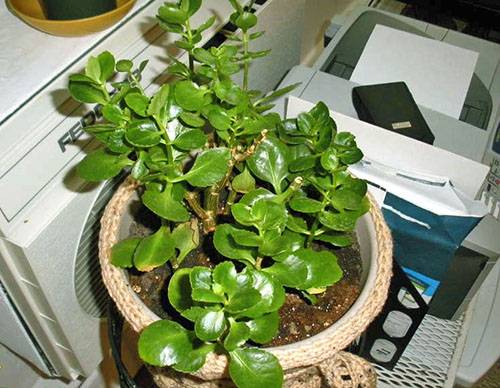

After flowering, pruning of Kalanchoe is done not only in order to remove excess leaves, but also in order to free the flower from peduncles. The leaves are removed, as with normal pruning: one or two outer leaves on the stems.
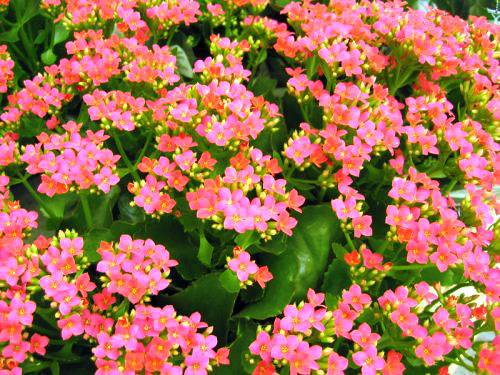

Before pruning the Kalanchoe after flowering, you need to make sure that all its flowers have completely faded. Peduncles must be removed at the very base so that the plant does not start to rot. They must be removed every single one after each flowering of the plant.
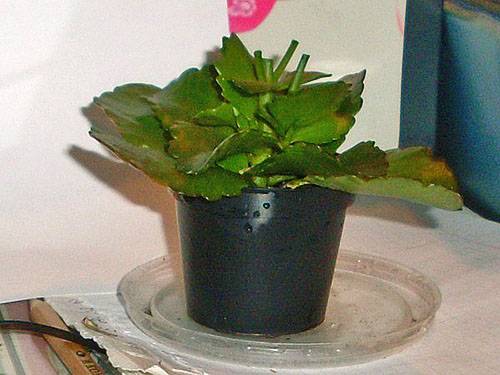

This procedure stimulates new growth of the stems ready to bloom. Upon completion of pruning Kalanchoe after flowering, the plant needs a rest period. This is the time to cut back on watering and ensure there is no direct sunlight. The time it takes for the flower to come to its senses is about 20 - 40 days.
It is better to prune leaves and peduncles in the morning, preferably before noon.
Timely pruning of the Kalanchoe will provide a lush and full-bodied shrub with regular flowering. Proper pruning is the health of the flower.
www.
Photo
How to cut Kalanchoe:
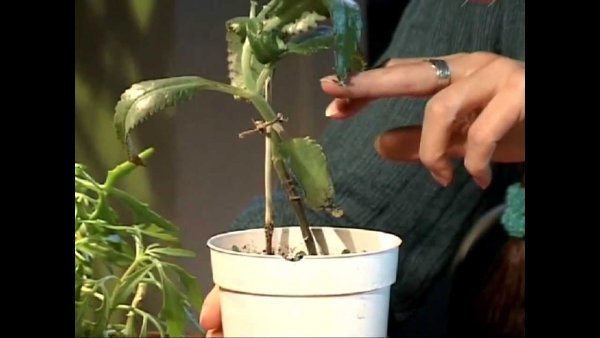

How to pinch a Kalanchoe:
Kalanchoe care
This flower loves bright light, so it is better to place it on the south window. The plant does not require constant adherence to temperature, drops of 17-25 degrees will not be terrible for him. In winter, the Kalanchoe survives the dry air very well, for him it is not a hindrance.The domestic Kalanchoe flower has a huge number of types of inflorescences of different colors: from bright orange, red or purple to delicate white.
In order for the Kalanchoe to bloom, you need to create certain conditions:
1. Daylight hours should be at least 12 hours. In this case, the temperature should be maintained at 15-18 degrees. Without enough light, you won't get large, brightly colored flowers.
2. Even in winter, the flower does not need to be sprayed. Take complex mineral fertilizers as top dressing. Fertilize once a week in summer and once a month in winter.
3. If you want to achieve active development and growth of Kalanchoe, then take a cramped pot. The soil should consist of a piece of leafy land and sod, sand and humus should be present in it. The presence of wood ash is allowed to activate growth.
Care after purchase
For indoor flowers, and especially for decorative Kalanchoe good home care is very important. First landing (transplant) Kalanchoe requires special attention. Immediately after purchase, the plant should be transplanted into another pot with new soil.
Most likely it has long outgrown its old pot, but remained in it for economic reasons. The soil should be changed, since it is not known what composition it has. For cultivation, pots with a diameter of 9 to 18 cm are used.
The most common sizes are 12-15 cm. The pot should not be too large, as this can cause bay and death. But too small a pot will not be so critical.
The worst thing that can happen is the plant will not bloom.
Transfer
Kalanchoe is growing very fast and therefore it is very important to replant it in a timely manner.
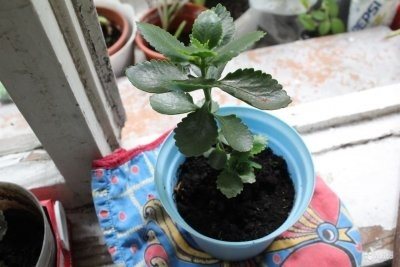

It is advisable to do this at least once a year, at the end of March.
Each new pot should be 2-3 cm larger than the previous one.
The transplant must be carried out very carefully so as not to damage the fragile stems and leaves.
The optimal soil composition should include turf, leaf and sand in equal proportions.
How to properly care for blooming Kalanchoe at home?
Maintaining the life of the Kalanchoe is not difficult enough, but in order for it to bloom as often and for a long time, additional knowledge and efforts will be needed.
Flowering conditions
Flowering begins in November and ends in March, when the dormant period begins.
Conditions of keeping Kalanchoe for abundant flowering:
- Water moderately and correctly - moisten the soil no more than once a week. Do not wet leaves and flowers. Make sure that there is no excess liquid.
- Illuminate correctly. That is, provide good access to the sun, but do not leave it in direct sunlight for too long. Normalized light conditions are very important for flowering.
In winter, you should extend the daytime with artificial lighting up to 12 hours, and in summer, shorten it with a canopy or move to a dark corner. - Protect from cold and drafts.
- Fertilize only from June to November no more than 1-2 times a month.
- Cut off old leaves and flower stalks.
Reproduction of Kalanchoe
Reproduction of the plant occurs by children, seeds, cuttings.
In the case of children, you need to take a small child from an adult plant. Put it upside down and sprinkle with prepared soil in a layer of about 1 cm. Watering is required every day in small portions. After a while, you can get several plants from each baby. The transplant of children is carried out together with an earthen lump.
The plant propagates by cuttings in a similar way. When pruning a plant, take a few cuttings from cut stems, plant them in wet sand, wrap with foil to speed up rooting. Prepare good drainage before replanting cuttings in separate pots.
Even fallen leaves are used for reproduction! It is enough to plant them in the sand, water them, drag the container with a film. It is better to carry out this manipulation in June. The same goes for seeds.
How to prune different species
And now we will figure out how to cut Kalanchoe of different varieties. It is noteworthy that today about 200 varieties of this flower are known. However, only a few can be grown at home. For almost all varieties, the pruning instruction is the same, but for some individual representatives there are special rules.
The most common variety is Blossfeld's Kalanchoe. The variety is great for growing at home. The plant blooms with beautiful red flowers. This Kalanchoe can be pruned to the very root. In this state, the flower will begin to develop intensively, its bush will become lush. The species that bloom yellow and white flowers need to be pinched in a different way. True, such varieties are rarely found in homes. They need special care. It is necessary to form such a bush competently. If you remove a lot of foliage, you can cause irreparable damage to the green space. To pinch correctly, it is important to find out what variety you have. However, it is worth remembering that pruning is a necessary procedure and painless for a plant. If decay has begun in the places of the cuts, you need to treat these areas with charcoal. To avoid such troubles, it is imperative to disinfect the trimming tools. In no case tear off excess leaves with your hands, such actions can weaken your green friend.
Plant pruning
When the plant stops blooming, prune it. Remove dead branches, form a crown. After trimming the Kalanchoe, a rest period is required. Reduce the amount of watering, pick up a darker place.
Leaves may begin to dry out and turn yellow. If the lower foliage turns yellow, this is a normal process. A yellowed middle tier is a sign of a violation of the rules of care. Then pay special attention to watering: let the earth dry completely between waterings. Withstand a week - drought is not terrible for Kalanchoe, but waterlogging can have a bad effect.
It is worth noting that periodically the plant needs to be updated, it will not be forever green.
Why crop
Pruning a homemade Kalanchoe is the removal of excess leaves and flowers. This procedure will help shape the plant to look beautiful. A small bush looks more original than a long stem.
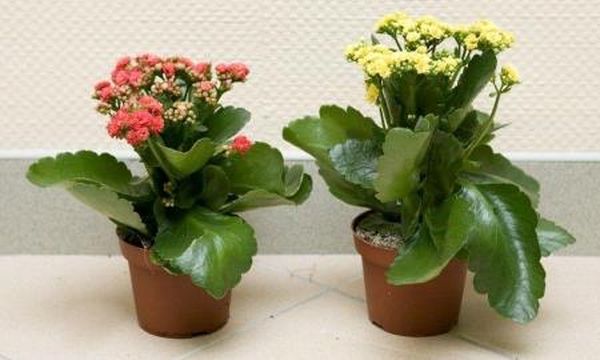

In addition to the decorative purpose, pruning is also needed for lush flowering. When we remove the extra shoots, sap accumulates in the stem, which is then evenly distributed over the remaining branches. Kalanchoe becomes juicy, the plant's resistance to drying increases.
Note that there are three types of pinching:
- initial;
- preventive;
- after flowering.
You will learn how and when each type of pinching is done. Sometimes, especially in sunny places, the flower can outgrow. Therefore, many gardeners are interested in how to cut the Kalanchoe, if it is stretched out. If it so happens that a long, ugly tip has grown, you just need to cut it off. Try to constantly observe the escapes. As soon as they begin to grow, you need to immediately pinch off two leaves on top of them. Of course, the green inhabitant of your house can do without pruning, only then it will look ugly, and old shoots will interfere with the development of young shoots.
Signs of plant disease
Although the plant is unpretentious, the plant can begin to suffer from improper care. There are several signs by which you can determine that the care of the Kalanchoe is wrong:
- fallen leaves are a sign that the plant lacks nutrition;
- with juicy and healthy leaves, there is no flowering - the reason lies in the lack of lighting;
- black spots on foliage are a sign that the plant is experiencing excess moisture and low temperatures.
If you have taken on the responsibility of caring for such a house plant, then be aware of the possible appearance of pests. Kalanchoe can suffer from mold if it is in a too humid and cold room. With an excess of heat and moisture, powdery mildew appears on the plant.
All this is easy to avoid, just create the specified conditions for the plant!
How and when?
In winter (more precisely, after November), pruning the Kalanchoe is strongly discouraged, since the plant is dormant. You can start in late spring, but at this time the plant can already bloom. You cannot cut off a flowering plant! If the Kalanchoe has bloomed, the procedure must be postponed until the end of flowering (how to care for the flowering Kalanchoe?).
It is better to prune the plant in the morning (before lunch). After pruning, the plant should be allowed to rest; it is not recommended to water it after the procedure.
There are several types of trimming:
- As soon as the plant has got into your house, you need to pinch to form the crown and set the correct direction of growth. To do this, you need to remove two or three outer leaves on each branch. After that, new shoots will begin to grow.
Until you achieve the desired result, the Kalanchoe should not be allowed to come into contact with direct sunlight. Sunlight will encourage the plant to grow quickly, and therefore the flower may stretch too far. - From this moment on, you need to periodically carry out preventive pruning in order to create a beautiful shape, and this must be done until the desired result is achieved. There is no need to wait for young shoots to grow. You can start pruning (pruning branches) and form the Kalanchoe as soon as new leaves appear.
Spring pruning Kalanchoe
For flowering in early spring, Kalanchoe is pruned according to the principle of primary processing - the removal of several shoots on actively developing shoots. Cut with scissors or you need to tear it off manually no more than 2 sheets on each shoot... It would be nice to sprinkle large wounds with wood ash so that the cut points do not rot.
Autumn pruning
During the month, the Kalanchoe will come to its senses, then it will bloom again, discard the inflorescences and will move towards a dormant period. Autumn pruning - This is the sanitary removal of dried up areas. It is not as traumatic and voluminous as the spring one. The procedure is carried out according to similar principles, only removing non-viable leaves. Before winter, it is especially important to decontaminate cut areas that react to temperature changes, and I can rot.
Also Kalanchoe can be helped get rid of dried inflorescencesthat only burden the flower. As in the case of spring pruning, the Kalanchoe is renewed in the morning, before the time of exposure to active rays. Although by the end of autumn the daylight hours are short and the light activity is reduced, it is still necessary to protect the plant from unforeseen damage.
Kalanchoe care after pruning for flowering
Water the Kalanchoe after pruning in moderation - the soil mixture should not dry out in a pot. It reacts violently to waterlogging, as it stores a volume of moisture sufficient to continue its life in winter and can rot with excessive watering.
How often to water:
- In summer, once every 3 days;
- In autumn and winter, once every 1-1.5 weeks;
Kalanchoe is fed 1 time per 4 weeks 2 weeks after pruning. Air temperature in the spring-summer period + 20-25° C, and + 15 ° C in winter. In summer, the flower is ventilated - movements will not harm the blooming Kalanchoe. Put on the balcony or more often open windows in the room. An integrated approach to the care of the Kalanchoe will ensure lush flowering of both a young and a fairly adult plant.
↓ Write in the comments how do you cut Kalanchoe for flowering?
Plant features
In general, the plant is quite unpretentious, it is not very difficult to care for it, so it is well suited to buy it as a gift. At home, Kalanchoe, as a rule, does not grow more than half a meter in height. You can find out how to care for the Kalanchoe so that it blooms here.
The plant tolerates a short period of drought quite easily, but excessive watering is dangerous for it. When watering, it is worth making sure that the ground is soaked to the full depth, but there should be no excess moisture. It is worth choosing such a frequency of watering so that the soil has time to dry out. In summer, watering should be frequent, in winter - once every two weeks.
Reference! Kalanchoe loves bright light, and in winter she needs an additional light source. It is better to keep the Kalanchoe at a temperature not higher than +25 and not lower than +12 degrees, and in the heat the Kalanchoe must be watered daily.
In winter, it is important to keep moisture out of the leaves. In this case, in the summer, you need to wipe the leaves in order to clean them of dust and protect them from pests (what are the ways to treat Kalanchoe from diseases and pests?). Once a month, Kalanchoe needs to be fed with a special fertilizer. An excess of fertilizer is detrimental to the plant! Also, the plant needs frequent transplantation (how to properly transplant Kalanchoe?).
It so happens that the flowering period is delayed. How to solve this and other problems, we wrote in our materials:
- How to achieve abundant flowering of Kalanchoe? Transplant advice after purchase and care.
- Kalanchoe does not bloom at home: what to do and what kind of plant care will be required?
- How to care for flowering Kalanchoe. Tips on how to make this plant bloom at home.
- Why do Kalanchoe leaves turn yellow and what to do with this and other problems?
Why prune?
Thanks to pruning, you can give the plant a beautiful bush shape. Pruning also encourages good flower growth and development.
There are 3 types of trimming:
- Initial;
- For preventive purposes;
- After flowering.
How to pinch a Kalanchoe? To trim Kalanchoe at home, you need to use a sharp blade. It is not recommended to pick off the leaves with your hands, as you can harm the flower, and it will begin to fade. Pruning will create a beautiful and lush bush.
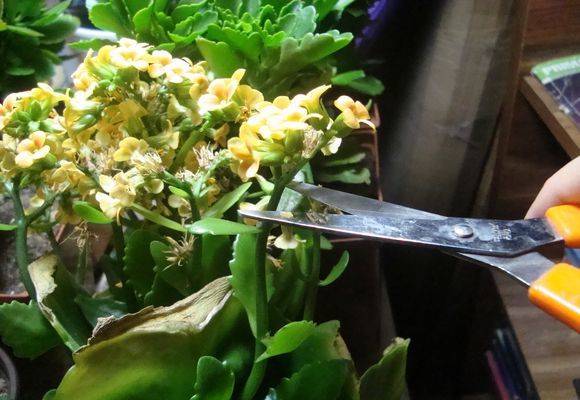

Basic rules for its implementation
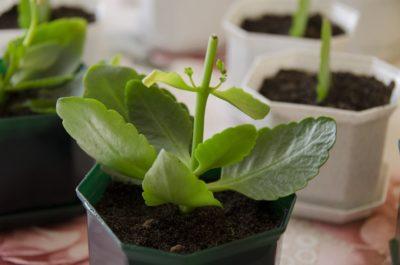

Pruning rules depend on the type of plant:
- Blossfeld's Kalanchoe, a plant that blooms with red flowers, tolerates the pruning process very calmly.
- With other species (most often - with plants that have white and yellow flowers), you need to be extremely careful: if you prune incorrectly or remove too many leaves, it will be fatal for these Kalanchoe species.
If you damage the stem during pruning, you should immediately sprinkle the cut with wood ash.
Advice! For trimming Kalanchoe, it is better to use scissors with a sharp blade to avoid unnecessary damage.
Cropping depending on the type
Today, there are about 200 varieties of Kalanchoe, but only a few of them are grown at home. Almost all varieties of Kalanchoe are cut in the same way, but for some varieties there are certain rules.
The most popular species is Blossfeld's Kalanchoe. This variety is quite often grown at home, it blooms with red flowers. Kalanchoe Blossfeld can be cut almost completely at the root, and leave only a "stump", nothing bad will happen to the plant. On the contrary, it begins to develop more intensively and build up green mass. His bush will become lush and beautiful.
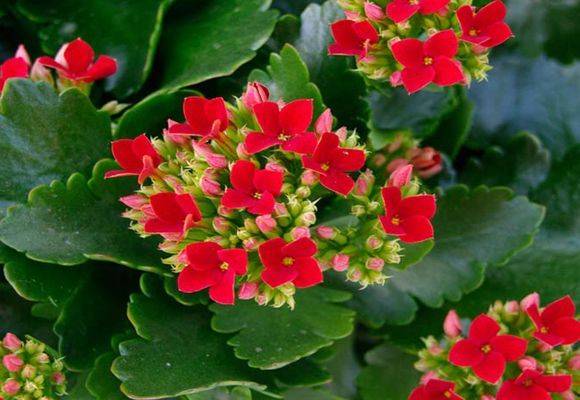

But the varieties that bloom with yellow and white flowers must be cut differently. It is also worth mentioning that such species are quite rare at home, and they are also very moody.You should pinch the bush correctly, since if you remove the foliage too much, you can harm the plant. Before pinching a flower, you should accurately determine its variety.
Pruning must be done correctly. Basically, this process is painless for the plant. But if you notice rotting in the places of the cuts, then the damaged areas must be immediately treated with charcoal.
Healing Kalanchoe and decorative
The tree of life, the room doctor, indoor ginseng - what names did Kalanchoe receive for its usefulness and necessity. And although different types of this plant look different, they all have healing properties. In total, more than 200 species of Kalanchoe are known in nature. Only a few of them are grown at home. Most often Kalanchoe pinnate, Kalanchoe Blosfeld, Kalanchoe Daigremonta, one-flowered Kalanchoe.
Fresh articles about garden and vegetable garden
What does the hippeastrum plant look like?
How to grow an orange at home
How to grow tulips for the New Year?
But whatever Kalanchoe you purchased, home care for any representative of this plant is approximately the same. After all, they all belong to the same family - the bastards. These plants are inhabitants of the tropics. They are adapted to a long stay, both in arid conditions and in conditions of high humidity. Kalanchoe leaves in favorable periods accumulate moisture, which the plant can then use for survival. Also, this flower does not need to be fertilized and transplanted often. We can say that this plant gives us more than it requires of us.
Also, these indoor flowers are characterized by resistance to various diseases and pests. In addition, even a plant that has begun to rot or disappear can be divided into cuttings and rooted. It reproduces easily and often independently with the help of children.
But, despite the unpretentiousness of this plant, it is worth remembering how to care for the Kalanchoe at home.
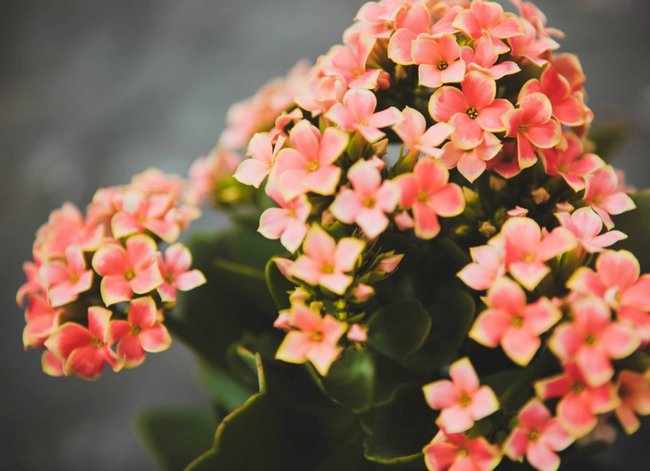

Step-by-step instructions for initial and preventive pruning
In order for the bush to have a lush and rounded shape, it is imperative to prune. Most novice florists are interested in how to pinch the Kalanchoe correctly so that the plant develops well? A young specimen needs to be pinched almost immediately, as soon as it adapts to new conditions and begins to grow. To do this, cut 1 - 2 leaves on each stem of the plant. This is considered the initial pruning.
Prophylactic pruning is then performed as needed. In the places of the cuts, after a while it will be possible to see new stems, and on them young leaves. Professionals recommend doing this procedure at home several times until the plant forms a lush bush.
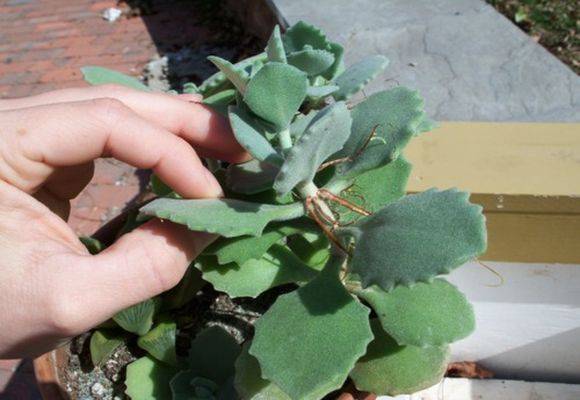

When winter comes, it is best to stop pruning. But in the middle of spring, the procedure can be resumed. But usually at this time of the year the Kalanchoe begins to bloom, then in this case pruning is not recommended. Preventive pruning can be done as soon as new leaves appear on the stems. You don't have to wait until they grow up.
When forming a plant at the initial stage, it is not advisable to keep it in a room where there is very bright light. This can be explained by the fact that good lighting gives the flower very rapid growth, as a result of which the flower simply outgrows.
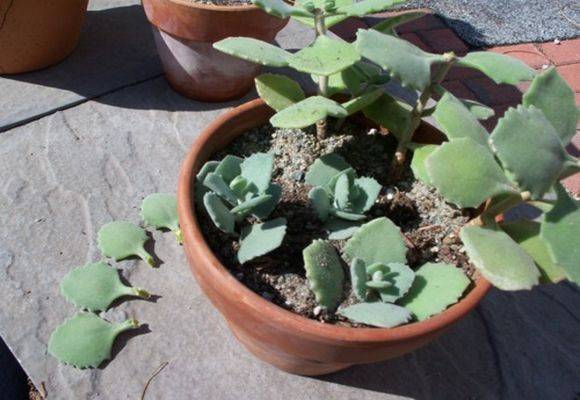

Pinching subtleties
If you keep a close eye on the flower and prevent overgrowth, serious pruning will not be necessary. As soon as ugly shoots begin to appear above the crown of the shrub, they need to be pinched off, that is, a couple of upper leaves are removed. Try to carefully monitor the shoots and prevent them from overgrowing, thus, further cuts will be less painful for the flower, however, the need for a full-fledged procedure will not disappear completely.
In addition, timely pinching will make an adult bush denser, branched and rounded, and a rooted cuttings will help bloom. To do this, it is necessary from time to time to pinch the emerging shoots of a young plant over the fourth leaf.
Tip: the first pinching should be done as soon as the succulent reaches your home. This will set the correct direction for the growth of the flower and lay the foundation for a lush crown. The first pinching method is simple: it is enough to remove two or three upper leaves from each branch to ensure the growth of young shoots. Flower growers do not recommend pinching the plant during the flowering period.
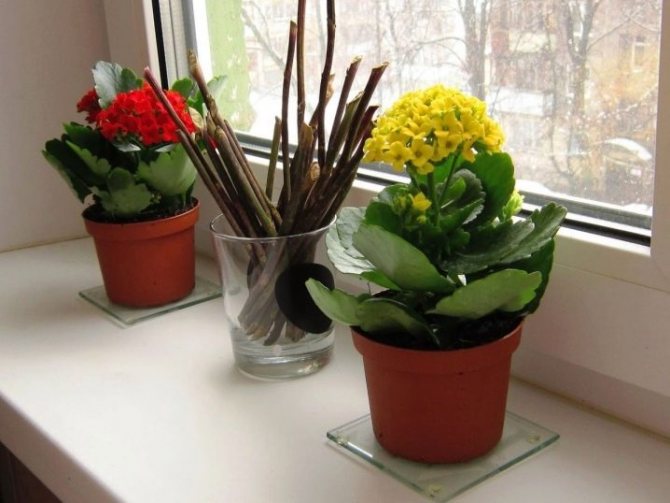

Competent pruning after flowering
How to prune Kalanchoe correctly after flowering? Pruning is always required after flowering. Thus, you will not only save your handsome man from extra leaves, but also free your handsome man from peduncles. After flowering, the pruning process is carried out in the same way as in the initial stage.
Before you start pruning a homely beauty after flowering, you need to fully make sure that it really has completely faded. Peduncles can be removed almost at the root to prevent rotting of the plant. After each flowering, it is recommended to get rid of all peduncles.
Thanks to this procedure, there will be an excellent formation of the bush, and will allow the plant to get new shoots. At the end of pruning after flowering, you need to give the flower a rest. He has a period of rest. During this period of time, it is necessary to minimize the frequency of watering, and protect the flower from direct sunlight. Usually Kalanchoe regains its strength for about a month.
Leaves and flower stalks are best pruned in the morning.
In order to form a lush Kalanchoe bush, it is necessary to prune in a timely manner. Correct pruning is the key to flower development.


Bush formation
Shoots of decorative Kalanchoe can grow up to 50 centimeters in height, however, the appearance of such a tall succulent will be depressing. In addition to the sloppy look, the minus of the "overgrown bush" is that it will not be able to give flowers and will quickly fade.
You cannot start forming without preparation, as you risk damaging the flower. Do not strive to immediately cut off all the leaves and form the perfect roundness, give the plant time. Although the Blossfeld variety will be able to withstand the "hemp" condition, a flower cut this way will look worse than an "overgrown" one.
If you missed the point, and the shoots are overgrown and bare the base, the best solution is to root them separately. Kalanchoe shoots take root well. Tip: Root ten-centimeter cuttings in a circle around the edges of the pot. This will lay the foundation for their correct growth and allow you to grow a beautiful lush bush. And the basic rule of forming a beautiful bush after pruning: say no to bright direct light. Otherwise, your plant will instantly outgrow, stretch and lose its desired shape.
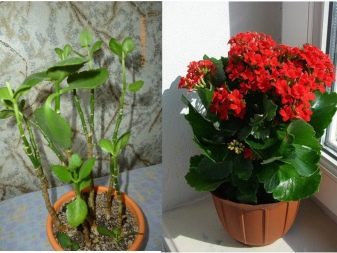

Care
It is necessary to take care of the Kalanchoe at home correctly in order to get abundant flowering. In addition to pruning, the plant must also be properly watered, fertilized and maintained at the optimum temperature.
Watering mode and humidity
Kalanchoe is a plant that retains moisture in the leaves. Therefore, the flower normally tolerates a certain period of time without moistening the soil. However, the Kalanchoe has an extremely negative attitude towards the bay, this can adversely affect the plant.
Watering the Kalanchoe at home should be correct so that the flower grows and develops perfectly. When watering, the water should saturate the earthen lump well. Do not allow excessive moisture in the ground. It is best to water the plant in the summer 1 time in 3 days. In winter, watering is carried out as the soil dries.
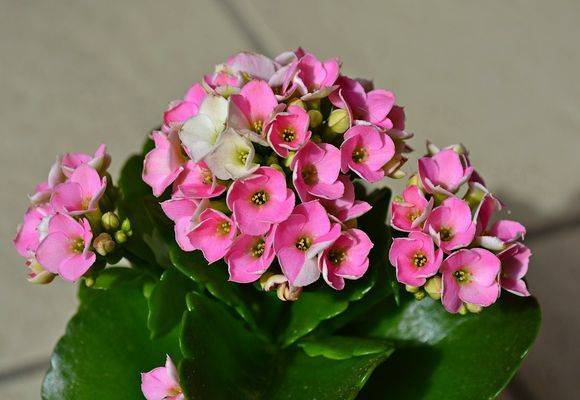

Kalanchoe, in principle, does not need spraying.In the cold season, it is generally not advisable to spray. To eliminate dust on the leaves, Kalanchoe should sometimes be bathed in the shower. And wipe the leaves with a damp cloth, as a result of which you will protect the flower from various pests.
Top dressing
Kalanchoe needs to be fertilized for good growth - about once every 3-4 weeks. In order for the plant to bloom profusely, complex fertilizing should be used, but half the dose must be applied than indicated on the package. Just feed the plant carefully, otherwise it can negatively affect the Kalanchoe. In winter, the flower should not be fed.
Temperature regime
Kalanchoe tolerates heat well, but in order to avoid drying out of the soil, the frequency of watering must be increased. In warm weather, a pot with a flower is taken out into the fresh air or placed on the balcony, in these places the Kalanchoe feels great. In summer, the temperature should be around 25 degrees, and in winter 13-15 ° C.
podokonnik.
What you should know before pinching


The heroes of our article refer to plants that have been used since ancient times for medicinal purposes.
The heroes of our article refer to plants that have been used for medicinal purposes since ancient times. From their leaves squeezed juice, which has an anti-inflammatory effect, used on wounds, burns, and even from the "scourge of humanity" - the common cold (from which, until now, there are almost no drugs more effective). Especially after pinching, Kalanchoë grows rapidly,
Although almost all varieties of Kalanchoë need to be pinched, there are certain species that do not need to be pinched - they already have a complete shape all year round, without shoots periodically drying out at the ends in other species. One of these - the most famous of all, is called Degremona among scientists and gardeners, and among the people he received the honorary name "doctor" (or "surgeon"), for its exceptional medicinal properties. And also - "crocodile", behind growing in pairs fleshy toothed leaves, between which the "younger generation" huddles. Although this Kalanchoe withstands stubbornly, and if desired, you can do this, after this procedure, it grows lateral shoots without much zeal.
Video about Kalanchoe
Why pruning is needed: the main reasons
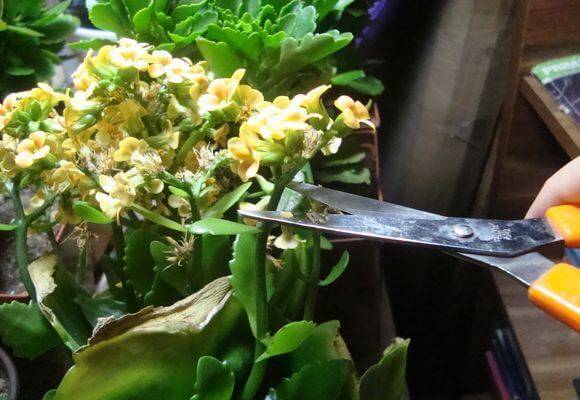

Kalanchoe may well do without pruning, but in this case, its decorative effect is lost. Over time, the shoots begin to stretch out, become bare near the trunk, and the old branches do not allow the young to develop normally. Pruning has the following goals:
- Maintains a beautiful and harmonious bush shape. Often, the top of the Kalanchoe, stretching towards the sunlight, violates the correct proportions of the plant, so it periodically needs to be “demolished”;
- It gives the bush a rest after long flowering. During pruning, all dried inflorescences are removed, which draw life juices from the plant;
- Rejuvenates the bush and allows you to multiply the variety. From an adult, elongated bush, during the removal of shoots, you can get good planting material in the form of cuttings, which will quickly turn into compact flowering Kalanchoe;
- Creates favorable conditions for development. After pruning, the juice that has accumulated inside the flower is evenly distributed over all the shoots, nourishing them. As a result, the bush becomes more resistant to wilting and drying;
- Helps prevent diseases. Removing dried and damaged branches is a kind of prevention, thanks to which the Kalanchoe will not hurt.
What types of Kalanchoe require pruning
In floriculture, about 200 different types of Kalanchoe are known, but only a few of them are grown at home. Although, in general, pruning for all varieties is performed in the same way, still specific points should be highlighted.
The most common inhabitant of the windowsill, Blossfeld's Kalanchoe, can be identified by the bright red inflorescences that adorn the compact bright green bush.
It is a very hardy plant that will easily survive the most radical pruning. That is why, if the plant begins to stretch strongly, it can be completely cut off the top, leaving a small stump. Soon, new shoots will begin to appear at the site of the "operation", and the Kalanchoe will bush luxuriantly and beautifully.
The yellow-flowered and white-flowered Kalanchoe hybrids are more whimsical, therefore they require careful pruning. They do not tolerate excessive foliage removal and can die after improper manipulation.
Kalanchoe Degremona is a rather colorful plant that looks unusual due to its erect stem and gray-green deciduous mass, surrounded by young layers. This look also requires formative pruning, the implementation of which depends on the aesthetic preferences of the grower.
What is it for?
Indoor Kalanchoe has about two hundred different species, one of which you will definitely like. The thick glossy leaves of this succulent have a fleshy structure, and at the top of the formed bush there are many lush inflorescences. Interestingly, flowers can have different shapes depending on the species, for example, a tube or a bell. At the same time, Kalanchoe is quite unpretentious, and will be able to delight you with beautiful inflorescences throughout the year.
It must be borne in mind that in especially sunny places, Kalanchoe quickly grows and stretches, losing its beautifully formed rounded shape... The upper new shoots begin to actively knock out of the "general order", and the old ones eventually shed their foliage and appear high above the crown. Pruning will help to restore a neat appearance to the plant. In addition, it contributes to rejuvenation and distribution of the juice accumulated in the overgrown stem to the remaining processes, that is, it makes the bush more juicy. Also, the procedure will allow the root system of the flower to develop harmoniously. By removing unnecessary shoots and shoots, you will help the plant grow a beautiful, uniform crown, give it a well-groomed appearance, and also contribute to lush flowering.
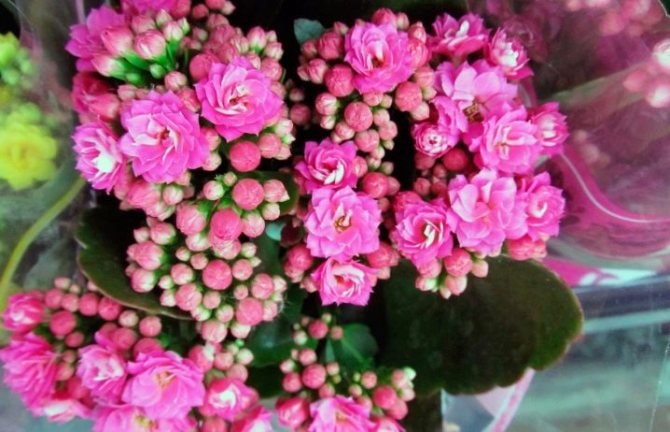

Pruning Kalanchoe: features and deadlines
The initial pruning helps to form a young bush, so it is advisable to perform it immediately after the shoot has taken root and adapted to new conditions. For this, a simple manipulation is enough - on each of the Kalanchoe shoots, 1-2 upper leaves are carefully removed.
Preventive pruning should be done after new leaves have formed on the stems. The specificity of this procedure lies in the possibility of removing shoots almost all year round, with the exception of the winter period. To achieve the desired result, it is necessary to pinch the tops of the branches after the formation of the 3rd pair of true leaves.
The last stage of the formative pruning of Kalanchoe is carried out in November for plants growing on southern windowsills, or throughout December for bushes with pots on the east or west side.
After pruning at home, in the initial stages of bush growth, it is better not to put the Kalanchoe on a windowsill with a lot of light - it must be shaded. Bright lighting provokes the rapid growth of shoots, as a result of which they stretch out again and nullify all the efforts of the grower to form the plant.
The specifics of pruning after flowering
Pruning Kalanchoe will help rid the plant of excess leaves and dried peduncles, thereby contributing to the accumulation of strength for lush budding.
If you cut the inflorescences at the root, you can guarantee the health of the bush and prevent decay. For preventive purposes, the cut sites are sprinkled with crushed activated or charcoal.
If desired, you can shorten the shoots, giving the bush the desired shape, or pinch the tops, as during the initial pruning (about 2/3 of the stem height is removed).After flowering Kalanchoe, it is better to give it a rest by organizing a rest period for it for 1 month. The bush is shaded, and watering is minimized (once every 14 days).
How to form a Kalanchoe bush
Shoots of Kalanchoe (first of all, we are talking about decorative and floral varieties) reach a height of up to 50 cm, but the greatest decorative value is a dense, low bush without bare stems that shine through between the leaves. To form such a bush, regular pruning is required from the first stages of plant life. Pruning Kalanchoe is carried out according to the technology of "pinching" - cut with a sharp knife or blade the top of the shoot with two young leaves and. Scissors are not recommended for this, since they squeeze the thickness of the fleshy stem, causing severe damage to it. The slices dry out quickly and tighten. If rot begins to form on them, the affected surface should be treated with potassium permanganate or wood ash.
Basic rules of care
In order for your flower to have fresh green leaves and bloom beautifully, you need to follow a few simple rules. The main criteria that need to be monitored are: watering, soil composition, fertilizing and fertilization.
- The soil should be loose, light and nutritious. When planting, it is enough to add humus and peat in equal parts to ordinary garden soil and then you can not fertilize the flower.
- The duration of daylight hours for a plant should not exceed 8 - 10 hours. It is not advisable to expose the pot in direct sunlight, but light is needed, and better diffused.
- Humates, herbal infusions and peat can be applied only during the period of active flowering, the rest of the time it is not necessary to feed the Kalanchoe, especially do not introduce nitrogen-containing substances. Otherwise, the bush will grow very quickly, and flowering may not come.
- The pot needs a drainage layer, moderate watering of the plant, since succulents do not tolerate excessive waterlogging. This can lead to root rot and death.
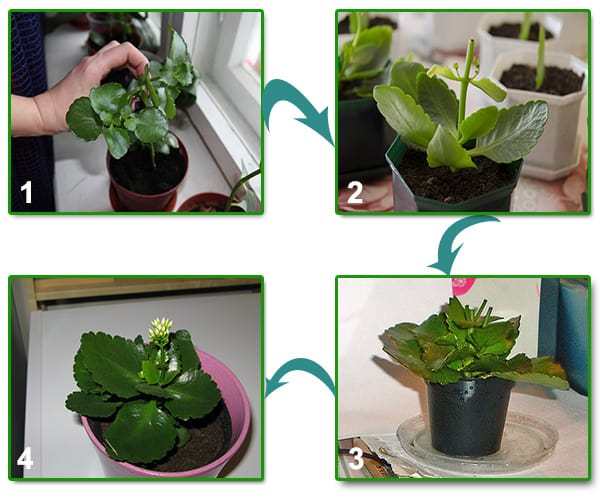

Initial pruning
It is carried out in the spring after transplanting young plants into another, more spacious flower container. The fact that the Kalanchoe has taken root will become clear by the formation of new leaves on the tops of the shoots. The top two of them should be cut on each branch. It is necessary to observe the open wounds - if they have dried up within 3-4 hours, it means that the plant successfully and independently copes with the pruning procedure. Otherwise, the sections are crushed with charcoal powder or cinnamon.
Short description
In total, about two hundred varieties of this plant are known for growing at home. Each of which has its own characteristics, and, accordingly, you need to take care of it, having previously studied the information. Kalanchoe is no exception.
In principle, the plant is unpretentious, but some points just need to be known and monitored in order to subsequently enjoy magnificent flowering and lush greenery.
A separate column in the rules of care is trimming. Let's study this issue in more detail.
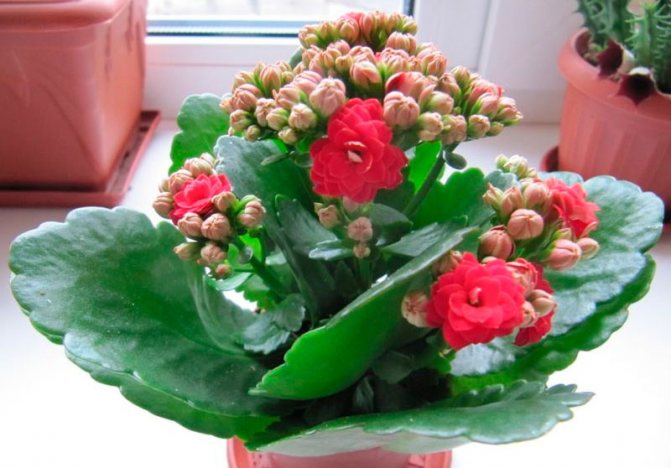

Pruning Kalanchoe step by step
Correctly cut the Kalanchoe according to the following scheme:
- Using a disinfected sharp knife or blade, the 2 top sheets are removed (see photo).
- After the length of young shoots reaches a centimeter (3 pairs of leaves), their tops are pinched.
- Subsequent shoots are pruned in the same way until the shape of the bush acquires the desired decorative effect.
It is not recommended to use scissors for pruning Kalanchoe - they severely damage the fleshy tissue of the flower, as a result of which the undercuts take a long time or even begin to rot.
Pruning and pinching are not burdensome, but very important activities for the formation of a flower bush. If you cut the Kalanchoe correctly and on time, this will not only contribute to their acquisition of a beautiful shape, but also heal and rejuvenate him.
What rules must be followed when circumcision
How to properly trim Kalanchoe? Pruning refers to the removal of unwanted leaves or flowers. But you need to know how to cut the Kalanchoe in order to renew the bush, and he did not die and did not get sick. It is used to give the plant a neat, rounded shape.
Pruning is necessary for a plant both for decorative purposes and to create the most favorable conditions for development, since the juice that accumulates in the Kalanchoe will be more evenly distributed over the stems, thereby filling the leaves.
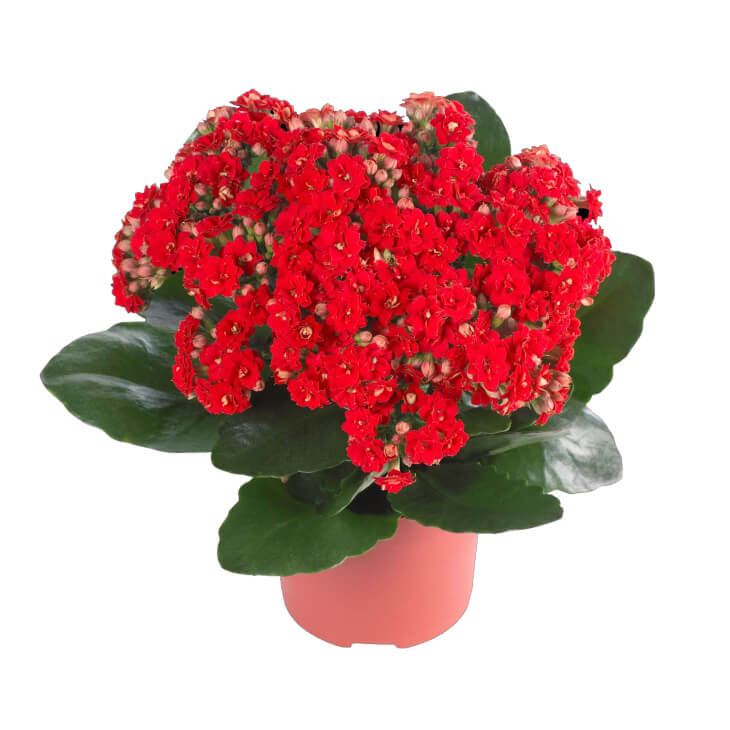

Photo of a lush bloom
With the help of this, the Kalanchoe becomes more resilient.
Pruning is divided into three types:
- The initial
- For prevention
- After the plant has bloomed.
The initial pruning is the removal of one or two top leaves on all shoots of the plant.
Prophylactic circumcision is done as needed, not hard. In the place where the pruning was carried out, shoots will grow again, and on them leaves will.
How to properly cut Kalanchoe so that it blooms? Before pruning after flowering, you need to decide that all the buds have faded. Peduncles must be removed right at the base, otherwise the plant will begin to rot. Through this process, the development of stems that are ready to bloom is stimulated.
A knife with a sharp blade must be used for this process. If you pick the leaves by hand, you can do great harm to the plant, because of this, it will begin to wilt. When pruning, you need to reduce the amount of water when watering and protect from direct sunlight.
In the summer, it is necessary to pinch the upper shoots, this will allow the lateral ones to grow faster. If you do not carry out this procedure, the Kalanchoe will acquire an unattractive shape, stretching and expanding.
A timely cut will provide the Kalanchoe with an attractive look that will bloom regularly.
Expert opinion
Yulia Yurievna
I have a large garden and vegetable garden, several greenhouses. I love modern methods of plant cultivation and soil mulching, I share my experience.
Ask a Question
If the plant was exposed to abundant light, the stem could grow too much. Although, sometimes the shoots are stretched out from a lack of sunlight. If this happens, you need to know how to cut the Kalanchoe if the stems are very elongated.
In the described situation, the top just needs to be cut off to the required level. You can remove about half of this escape. Then the plant will begin to bush, and will soon become more compact. We recommend that you constantly monitor the shoots so that the old ones do not interfere with the new ones and all the branches grow evenly.
For this flower, the timing of the procedure is also important. Much depends on the type of trim. So, prophylactic can be carried out in early spring. Can Kalanchoe be cut in autumn? Yes, but it is better to do it in November or even at the beginning of winter.
We would like to note that all procedures must be carried out with clean and disinfected instruments. You can wipe scissors or pruning shears with rubbing alcohol or a manganese solution.
Although the described flower tolerates pruning and shaping well, you need to monitor the condition of the plant. Those specimens that have recently been ill or simply have a sluggish appearance should not be disturbed. Such procedures, taking into account the weakening of the plant, can even lead to its death.
Optimal conditions for growing Kalanchoe
Kalanchoe belongs to undemanding plants and grows well in apartment conditions. In winter, the plant tolerates direct sunlight well. You can place the pot on the south, east or west window. In summer, the rays of the scorching sun can burn the leaf plates, which will affect the process of flower growth, so it is better to shade the pot.
The northern window for growing Kalanchoe is not suitable, from a lack of light, the shoots stretch out, flowering is very scarce or completely absent.
Did you know? Kalanchoe is not only a beautiful ornamental plant, for example, the Kalanchoe of Degremona is medicinal, its leaves and shoots are highly valued in folk medicine.
The temperature range at which the plant feels comfortable is quite wide - from +15 to +29 ° C, which makes it possible to grow Kalanchoe at home without any problems at any time of the year.
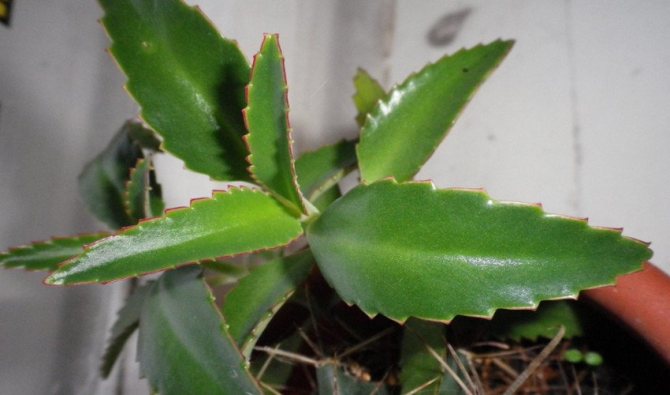

However, at temperatures below +10 degrees, the flower may stop developing and start to hurt, so it is not recommended to place the pot near the air conditioner or on a cold windowsill in winter.
The air humidity should be medium - from 50 to 70%, at low humidity the plant can get sick. Also, dry air is a habitat for pests, therefore it is recommended to regularly spray the plant or install a container with wet expanded clay next to the pot.
Kalanchoe prefers soil, the acidity level of which is from 5 to 6.5 pH.
What problems can arise
Usually, there are no problems with Kalanchoe after pruning, but only if the growing conditions and care coincide with the recommendations. Sometimes, after pruning, the plants' resistance to diseases or pests decreases, they become more demanding on the conditions of maintenance or care, therefore they need additional attention.
Among the common Kalanchoe diseases are:
- late blight - the appearance of brown spots or brown bloom on the deciduous part. The cause of the disease can be waterlogged soil or poor ventilation in the room. To cure the plant, it is recommended to revise the watering regime and ventilate the room more often. It is better to remove the diseased parts, after that the flower should be sprayed with "Fitosporin", according to the instructions;
- powdery mildew - a fungal disease characterized by the appearance of a white coating on the leaves. The problem is caused by dry and warm air. To cure the disease, it is necessary to change the conditions of detention according to the recommendations and treat the flower with "Fundazol", according to the instructions;
- gray rot - manifests itself in the form of a sticky gray coating on the leaves of the Kalanchoe. Improper care is the cause of the problem. The flower should be treated with Teldor and the diseased parts should be removed;
- stem rot - blackening of the stems at the base. The cause of the disease is the low temperature of the content. You can cure the flower by treating the ground part with "Discor" according to the instructions.
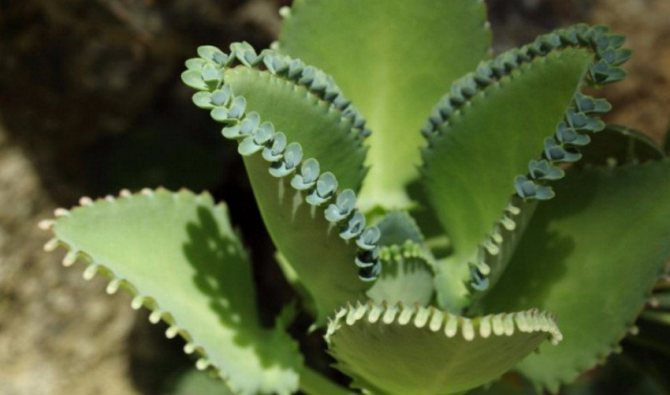

Pests that can appear on the plant are represented by:
- mealybug - an insect that sucks the sap from the plant and leaves a white waxy discharge on the leaves. If possible, all insects are harvested by hand, severely affected parts are removed, after which the flower is treated with "Aktara";
- scabbard - appears on the plant as small brown bumps on the stems and the back of the leaves. To kill the insect, wipe the affected areas with a cotton pad moistened with alcohol and treat the plant with "Aktara";
- spider mite - a small insect that settles on the back of the leaves, after which they curl, turn yellow and fall off; the tick also braids the ground part of the plant with a thin web. The flower should be treated with Fitoverm.
Thus, pruning Kalanchoe is a necessary process of caring for a plant to maintain decorativeness and better shoot growth. So that the plant does not suffer from the consequences of pruning, attention should be paid to high-quality care and maintain optimal indoor microclimate indicators.
How to take care in the future?
At the end of pruning, the plant must be allowed to rest.
... At this time, it is necessary to reduce watering and remove the plant away from direct sunlight, that is, do not keep it on the window in the sunniest time of the day, a table near the window is much better suited, especially if the window is curtained with transparent tulle.The time it takes for the plant to fully recover after the pruning procedure is about a month (from 20 to 40 days).
So, if you follow all the rules (it is also advisable to consult with more experienced growers), you can grow a beautiful flower in your home and provide it with comfortable conditions for further reproduction.
When can you trim
The question of the correct timing of trimming the Kalanchoe is very important, because the health of a green pet largely depends on this. Specialists-flower growers categorically forbid to carry out the operation in winter, because, starting in November, the flower enters a state of hibernation - rest. It is necessary to catch the segment from the end of winter to the beginning of flowering of the Kalanchoe, which occurs in late spring. In no case should you touch a flowering plant, even if you just need to trim the crown a little. The plant can shed flower stalks and get sick. We'll have to wait until it blooms.
Rheo flower: examples of flower care at home
The best time of day for pruning is early morning or evening after sunset; it is not recommended to do the procedure closer to noon.
After transplanting, the plant cannot be cut off, it is necessary to give it time to adapt, about half a month. You should also wait 10-15 days after the pests on the diseased or affected flower are completely destroyed.
Additional Information. To carry out the operation, you must use a disinfected clerical knife (or garden pruner), cutting off leaves and shoots by hand can provoke flower diseases and its rapid wilting.
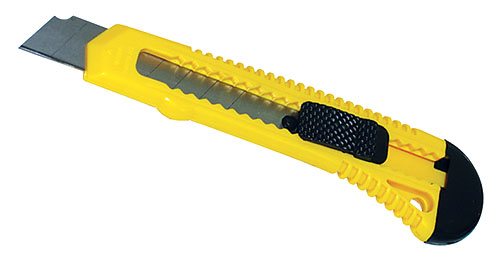

Stationery knife is the best tool for trimming Kalanchoe
Is it possible to prune in spring
The best period to prune an overgrown Kalanchoe bush is mid-spring. The end of March, all of April and the beginning of May are perfect for different types of pruning. However, it is very important to ensure that the plant at this time no longer begins to throw out peduncles and bloom. When a new bush is planted, its stem and top are actively stretching upward, so you need to pinch it slightly, without waiting for full-fledged foliage to grow. This operation will give the Kalanchoe a pleasant "rounded" appearance.
The essence of pruning and its types
Pruning is a necessary step in the care of the Kalanchoe. The procedure is the removal of faded buds, wilted leaves and excess shoots, which take away the strength of the flower for its development. Pruning is performed to give the plant a neat and well-groomed appearance, as well as to correctly form a beautiful dense crown.
With the help of pruning, you can adjust the growth and development of the plant in the right direction. By removing unnecessary consumers of moisture and nutrients, the flower is able to nourish and develop the root system and the aerial part. After the correct procedure, the plant becomes stronger and more beautiful.
Depending on the reason for pruning and the time of its implementation, the following types of procedure are distinguished:
- primary;
- preventive;
- after the end of flowering.
To trim the plant correctly, you must use a sharpened knife to cut the leaves at the base of the shoot. Do not tear off unnecessary parts with your hands, as this can cause the culture to wither.
What else is good to know about pinching
There is one more moment when it is very desirable to pinch the Kalanchoe - if it should bloom, but still will not give buds. Please note that standing on the northern windowsill, the flower grows with noticeable effort and may not bloom. If it is in the south, it should be pinched before December, and if it looks to the west or east, on any convenient day. By caring for Kalanchoë in this way, you will undoubtedly receive gratitude from him.
Often gardeners ask a question specifically about the Kalanchoe Kalandiva, how to pinch this flower.The main thing to consider is that the plant must be thoroughly pruned immediately after flowering. Otherwise, the instructions are the same.
Whether it is necessary to pinch the Kalanchoe - everyone decides for himself and his green pet, without this operation the plant will not die. However, remember that the procedure can help the process of healthy, lush growth, as well as improve the aesthetics of the appearance.
Pruning and pinching are not burdensome, but very important activities for the formation of a flower bush. If you cut the Kalanchoe correctly and on time, this will not only contribute to their acquisition of a beautiful shape, but also heal and rejuvenate it.
The main methods of plant formation
Pruning Kalanchoe is primarily aimed at giving a neat shape to the bush, and also creates more favorable conditions for development and growth for the flower. The sap accumulated inside the plant spreads evenly over the stems and foliage. As a result, the plant takes on a healthier, "juicy" appearance, its resistance to diseases and attacks of insect pests increases.
The decorative purpose of the trim is also important. With the exception of a couple of species - pinnate and Degrimona - the flower is grown as a compact and attractive, lush and beautifully flowering plant. Almost all of its varieties are characterized by rapid shoot growth. Pruning and pinching prevent the stems from branching chaotically and help to form a neat, rounded Kalanchoe, pleasing to the eye.
The purpose of the trimming and pinching procedures:
Before pruning or pinching, you should accurately determine the variety of culture - Kalandiva or Blossfeld's variety perfectly tolerate even intensive pruning, but rare hybrids blooming in yellow, pink, white are much more sensitive to it. An incorrectly performed procedure can destroy them, therefore, more often only a careful pinching of the top is applied to them.
Pruning
This procedure is of three types:
- initial - is carried out immediately after the young plant has taken root and started to grow;
- preventive - helps to form a beautiful shape, and also helps to improve the health of the flower by removing sick and old shoots;
- after flowering - this frees the bush from wilted peduncles, which become "provocateurs" of stem decay. In addition, pruning like this helps to get lush blooms in the coming year.
When cutting a flower, not complex, but mandatory rules should be followed. They help even a novice grower to carry out the procedure in the least painful way and with maximum benefit for the plant.
Pinching
The procedure means pinching off the tips of the flower shoots as they grow. This helps the bush to grow dense, forms its neat shape.
The cuttings obtained after pinching are good for plant propagation - they quickly and easily root in water or wet soil.
Comments (4)
Valya
02.01.2019 at 11:45 |
I don’t know how anyone, but my Kalanchoe wilted after pruning, so be careful with pruning, now I would not touch anything at all, if only the flower would live and grow further. I want to get a Kalanchoe, but I don't see it anywhere.Reply
Julia Expert Plodogorod
03.01.2019 at 00:15 |
Hello Valya! In most cases, pruning of this flower can be done in any amount. Even if you remove all the leaves and leave only the stem, it will soon be covered with dense foliage again. Therefore, it is likely that the cause of your pet's death was something else. Let's try to figure it out.
It is believed that this flower is unpretentious, but with improper care, the leaves can become lethargic, and this will lead to the fact that they fall off and the plant itself will be threatened. The most common cause is over-watering. At first, the flower will begin to accumulate excess moisture in the leaves, which will make them look dense, but then they will begin to fall off.But the lack of moisture is also harmful, although it can withstand drought for a while.
If the water for irrigation is not settled and too hard, then this will also badly affect your pet. Not very fond of this plant and direct sunlight. Burn spots may appear from them. Temperature fluctuations in winter during the dormant period can also have a detrimental effect on the Kalanchoe.
After the end of flowering, it is necessary to fertilize the plant, since it is depleted and especially susceptible to disease and harmful insects. To avoid problems, you should feed the flower during this period.
If a heel appears on the leaves, then this may indicate the development of a fungus. In such a case, it is necessary to quickly spray the plant with some kind of fungicide and transplant it into another container with new soil. If brown growths appear on the stem, then this is the so-called dropsy. As a treatment, you need to transfer the Kalanchoe to a dry and warm place.
If your plant has been affected by a disease or depleted by the wrong watering regime or prolonged flowering, then pruning could be the last factor that negatively affected its condition. Therefore, it is necessary to analyze the state of the flower in the complex.
Reply
Yana
22.03.2019 at 05:14 |
Hello, my Kalanchoe also wilted after I pruned the plant, now I don’t even know how to care for it and I’m panicky afraid to prune my trees.
Reply
Julia Expert Plodogorod
22.03.2019 at 22:08 |
Hello Yana! A possible reason for the poor condition of the plant after the pruning procedure may be the use of blunt tools. All manipulations need to be carried out only with sharp scissors or pruning shears.
We would like to note that the tools used to remove parts of the plant must be processed before starting. The fact is that an infection can get into the wounds. If this happened, then the plant could weaken from pruning and not cope with the infection.
Always machine cutting tools to prevent these problems from recurring. You can sterilize them with a solution of manganese, alcohol, bleach.
The cut is also worth processing. For this, ash can be used.
In addition to what has been described, it is worth emphasizing that the pruning rules depend on the type of Kalanchoe. For example, if you grow Blosfeldau, then you can safely carry out the procedure. It is this flower that is very tenacious.
But, with some species, this cannot be done. For example, if your plants have white or yellow buds, you need to trim it very little and with the utmost care. Improper technique or removal of large amounts of green matter can actually kill the flower.
You can not carry out such manipulations in the winter, when the flower is at rest. It is best to leave both pinching and pruning until spring.
We do not recommend reducing the volume of green mass during flowering. It is better to wait for the Kalanchoe to finish blooming.
If it is decided to carry out the formation of the crown in several stages in order to less load the plant, then you should not put it on a too sunny window in between. This will provoke intensive growth and elongation of shoots.
The plant should rest for at least a month before new manipulations with the crown.
It is best to start pruning in the morning and finish all work before noon. You should not moisten the flower after the procedure.
If the flower looks lethargic and weakened, and also has other signs of the disease, then you should not cut it. First you need to do some treatment. After, let the plant recover.
Reply
Transplant rules
Adult Kalanchoe with "children"
Kalanchoe is a plant that grows very quickly, so it needs a transplant at least once every two years. When? Better in early spring.
For transplanting Kalanchoe, it is recommended to use the "transshipment" method, transferring the plant to a pot that will be larger than the previous one by at least 2 cm in radius.
You need to be quite careful when pulling out the plant, since the Kalanchoe has very fragile leaves and stems. It is better to use the soil that is as similar as possible to the previous one; it is recommended to add humus to the ground.
Features of the trimming procedure
The rules for pruning Kalanchoe at home differ for different varieties. In particular, Blossfeld's Kalanchoe (has a bright red flowering) tolerates the removal of not only leaves, but also side shoots in any quantity. Even a bare "stump" of a flower will sprout new shoots and gradually be covered with young foliage. Kalandiva also “favors” the radical pruning of the Kalanchoe.
For work, use a sharp knife, scissors, previously disinfected with alcohol.
Pruning is carried out in the morning or evening to avoid the bright rays of the sun hitting the plant. After the procedure, a place is chosen for the flower, illuminated, but without direct exposure to solar ultraviolet radiation, so that the Kalanchoe does not move into rapid growth, having lost its acquired shape.
Hybrid varieties, as indicated above, are not pruned. For them, you just need to pinch correctly.
Dates of the
The pruning and pinching procedure is not carried out in late autumn and winter, when the flower is “retiring”. It is renewed in late spring, even before the Kalanchoe buds are laid.
Thus, formative and preventive pruning is last carried out in November, if the flower is on the windowsill near the southern window, or a little later, if it is located on the western or eastern window.
First and subsequent preventive pruning
The first pruning for a young Kalanchoe is carried out immediately after the beginning of its growth: one or two upper leaves are removed on each shoot. Gradually, new shoots will appear in the pinched places. Subsequently, 1-3 leaves are also cut off from them. From spring to late autumn, you can thus create a dense crown of an indoor flower of an attractive, neat shape.
If at the end of May the Kalanchoe still does not show signs of preparation for flowering, and only "fattens", increasing the green mass, remove 2-4 upper leaf plates on each shoot. This stimulates not only its growth in breadth, but also the laying of new peduncles.
To prevent the development of rot, the plant is carefully examined and all damaged stems and leaf plates are removed. In addition, without preventive pruning, Kalanchoe sheds old lower leaves as it grows, exposing the trunk. Pinching the appropriate shoots will cause them to branch out, creating an even density of the bush.
Preventive pruning of Kalanchoe is also carried out only from spring to the end of autumn (maximum - the beginning of winter). After the first molding procedure, the flower is not placed in the sun in order to avoid active growth of shoots.
How to prune Kalanchoe after flowering
This procedure is carried out only after the complete end of flowering. Its main goal is not only to maintain the shape of the Kalanchoe bush, but also to free it from peduncles. There is no need to pull - it is important not to let the petals dry out and crumble, and the peduncles - to wither. So that the process of plant decay does not begin, they are pinched by everything and as close as possible to their base. This will stimulate the emergence of new stems ready to bloom next year. In parallel, you can "cut" the Kalanchoe bush by removing the extra leaves. Work is carried out in the morning, reducing the intensity of lighting.
Having finished pruning the Kalanchoe after flowering, you need to give the plant a rest for one to one and a half months, since the process of forming buds and flowers greatly weakens it. During the "sleep period" watering is reduced and placed in a dark and cool place. It is also important for abundant flowering in the coming season.
The subtleties of the procedure for different types
The molding methods described above are suitable for "ordinary" Kalanchoe, blooming with red flowers. For rare hybrids with white, yellow or pink flowering, they are too radical: active pinching can not only provoke a painful condition of the flower, but also destroy it.
Hybrid varieties are pinched in a smaller volume, each time treating the remaining wounds on the stems with crushed activated carbon or wood ash.
Violation of the light regime in the Kalanchoe
Kalanchoe is a sun-loving flower. But the successful growth of its green part and lush flowering depends on a clear rationing of daylight hours. In winter, it needs to be brought closer to 12 o'clock using an electric light. In summer, the flower can be covered with a paper bag to remove the extra light hours.
- In winter, water the plant rarely, as the top layer of the earthen coma dries out significantly. Frequent moisture can lead to unnecessary Kalanchoe activity during this period, which will prevent it from blooming in spring.
- In summer, the flower needs to be watered abundantly a couple of times a week. Check the dryness of the ground by touch. Lack of water will weaken the plant, which will prevent bud formation.
Kalanchoe becomes vulnerable to harmful insects from overflow. The root system weakens, the leaves lose their turgor. A spider mite, felt mite, aphid can settle on it. You can save a flower by treating it with special means against pests.
What Kalanchoe needs for flowering
The reason why there are no flowers on the Kalanchoe is improper care. One of the main factors that influences flowering is the correct formation of the plant.
Immediately after all the flowers have faded, you need to remove all the flower stalks, but making sure that they have all dried up.
In order for the Kalanchoe to please with abundant flowering, you need to take into account the fact that the buds are formed on a short daylight hours under intense lighting. If the Kalanchoe was deprived of light during this period, it has a very small chance of blooming.
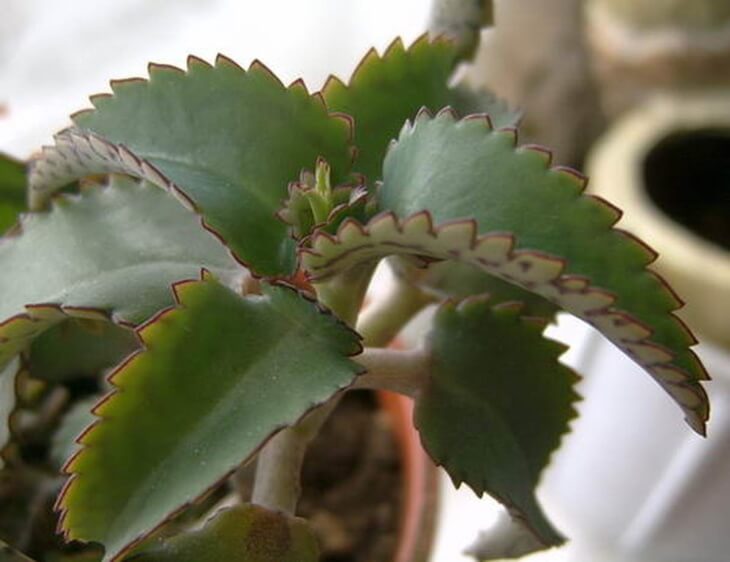

Young Kalanchoe
If the plant is located in an area with long-term illumination, then it is recommended to create a short day of light with your own hands. This can be achieved with a dark bag covering the Kalanchoe from 18:00 to 08:00.
You need to feed not only in the summer, but also in the autumn. You can use top dressing for cacti or succulents. The main thing in this case is not to overdo it, as you can achieve the opposite effect.
An important condition is also cold wintering - + 10 ° С-12 ° С and "poor" watering.
While watching the video, you will learn about the care of blooming Kalanchoe.
If you follow the rules and features, you can achieve the desired effect and soon Kalanchoe will bloom profusely.
Attention super FLY!
Houseplants
Interesting to read:
- Why do Kalanchoe leaves fall and how to deal with it?
- Kalanchoe - how to water this medicinal plant from the family of the bastard
- Caring for decorative Kalanchoe: detailed recommendations from transplanting to feeding
- Kalanchoe transplant: necessary preparation measures
- Healing house plants: pharmacy on the windowsill
- Types of indoor flowers and their features: classification and growing conditions
- How to water flowers in winter and signs of their death
- Special conditions for growing pepper nightshade
- How to plant a violet: basic tips and tricks for planting and care
How to pinch a Kalanchoe for the first time
Kalanchoe, regardless of its variety, must be pinched immediately after planting. All shoots, without exception, are subject to pinching - no more than a couple of extreme leaves are left on each of them, the rest are removed.
The next pinching is carried out as young shoots grow, on which leaves are formed. Its principle is the same as with the first pinching.This procedure is very important for the formation of the correct shape of the flower crown, therefore, a young plant requires particularly careful care. The pinching is carried out regularly, until the moment when you get the correct, branched flower shape.


